EAT WELL!

YOUR EYES






DEPEND ON IT FEELING FIT AFTER 50 FIND THE RIGHT NUTRIENTS YOGA FOR STRENGTH & BALANCE


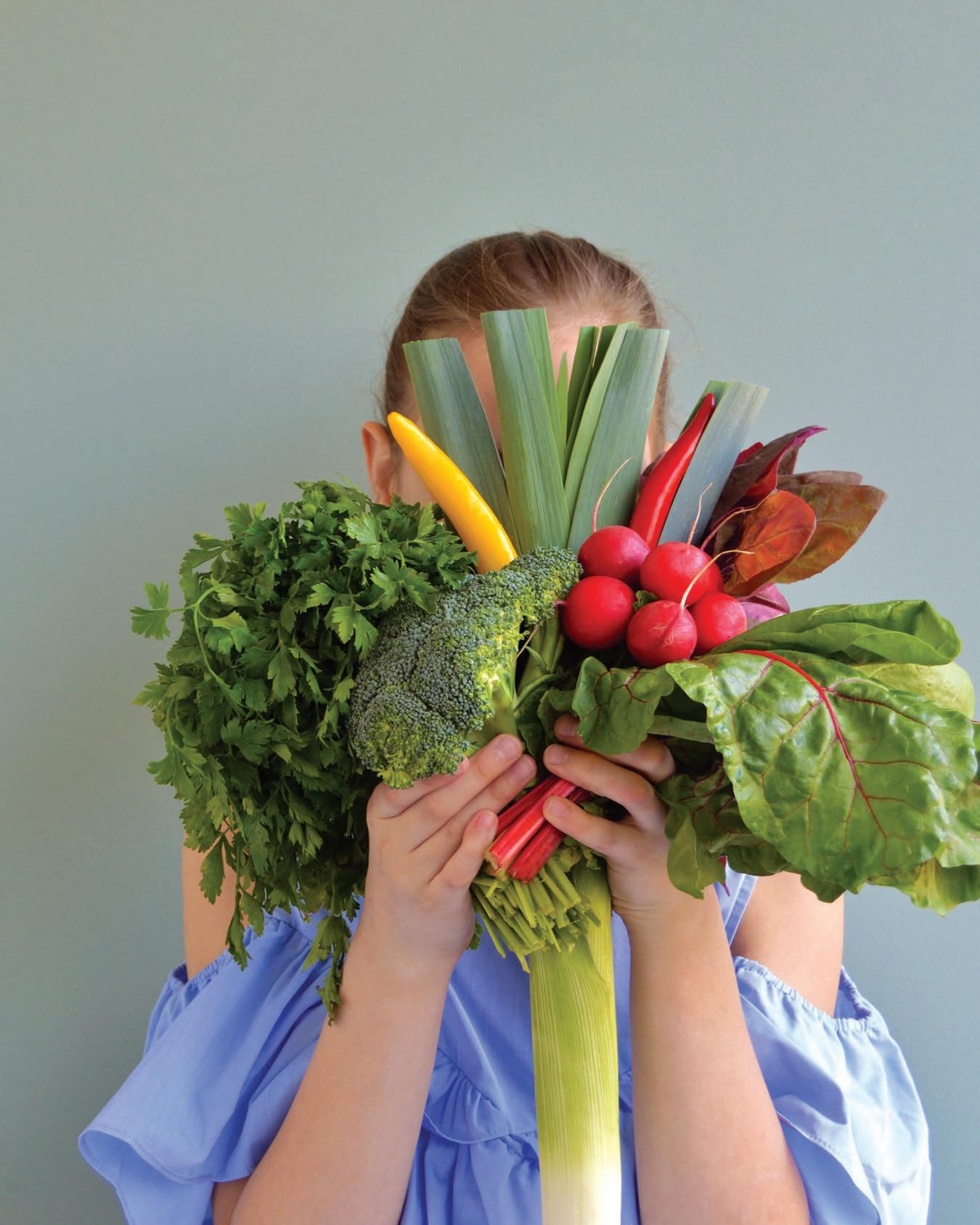
SKIN CANCER AWARENESS WHAT TO LOOK FOR AND HOW TO PREVENT IT





health watchIMAGE MAGAZINE’S FALL 2022 $4.95
lifestyle, fitness & nutrition





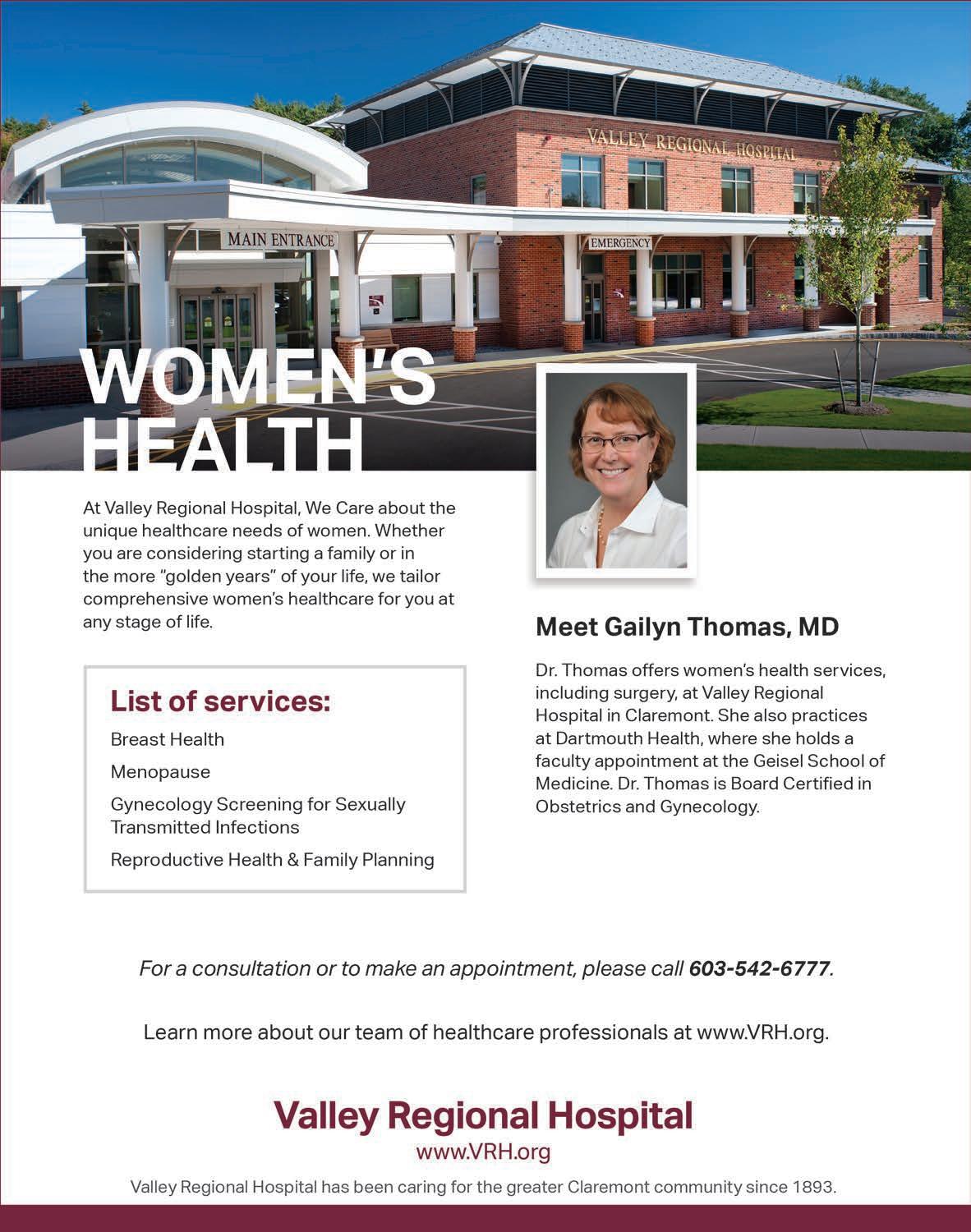



®
You deserve the most ADVANCED SKIN TREATMENTS
Whether you are searching for ways to look and feel beautiful or seeking advanced treatments for a broad array of skin conditions, Peraza Dermatology Group is the premier dermatology practice in the Upper Valley.

FEATURES DEPARTMENTS
24 UNDERSTANDING SKIN
CANCER
Screening and sun protection are key.
By Katherine P. Cox
30 THE SOBER CURIOUS MOVEMENT
Celebrate the choices. by Anne Richter Arnold
36 YOGA FOR SENIORS
A practice for lifelong physical and mental wellness.

by Susan Nye 64 FUELING ATHLETES
FROM THE FORESTS
UnTapped maple syrup for peak performance.
by Lisa Ballard
14 Word on Health
News, tips, and information for your well-being.
20 Living Well
The magic myth of 10,000 steps. by E. Senteio
46 The Right Balance
The nutrients to keep you feeling fit after 50. by E. Senteio
50 In the Know
Safe sedation in an office setting. Edited by Pamela Brown
54 Bright Ideas
Eye on nutrition. by Dr. Dorothy Hitchmoth
60 Financial Wellness
Do you have financial peace of mind? by Ledyard Financial Advisors
Advertisers Index
44 Healthy Choices Throughout the Valley
A guide to goods and services in the community.
CONTENTS 10 image health watch • 2022
72
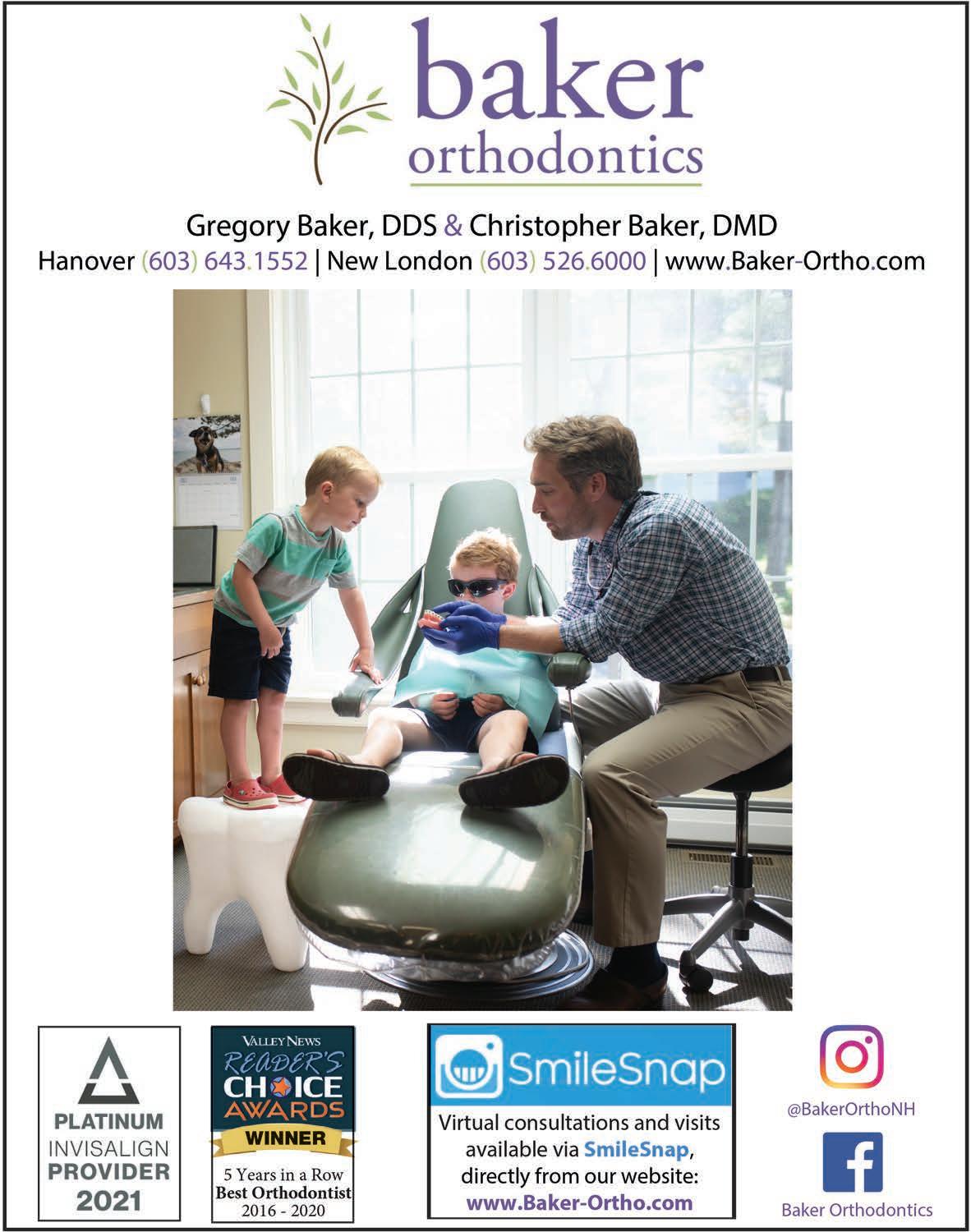
health watch
Mountain View Publishing, LLC

135 Lyme Road
Hanover, NH 03755 (603) 867-9339

www.greateruppervalley.com
Publishers
Bob Frisch
Cheryl Frisch
Executive Editor
Deborah Thompson
Associate Editor
Kristy Erickson
Creative Director/Design
Ellen Klempner-Béguin
Advertising Design
Melanie Marston
Web Design
Locable
Inbound Marketing Manager

Erin Frisch Advertising

Bob Frisch
KEEP US POSTED: health watch magazine wants to hear from readers. Correspondence may be addressed to: Letters to the Editor, health watch, 135 Lyme Road, Hanover, NH 03755. Or email us at: dthompson@moun tainviewpublishing.com. Advertising inquiries may be made by email to rcfrisch1@comcast. net. health watch is published annually by Mountain View Publishing, LLC© 2022. All rights reserved. Reproduction in whole or part is strictly prohibited. health watch magazine accepts no responsibility for unsolicited manuscripts, artwork, or photographs.

12 image health watch • 2022
lifestyle, fitness & nutrition IMAGE MAGAZINE’S FALL 2022
s nergetic tness ic gmai .com s nergetic t.com
Here’s to Your Health!
It’s
hard to believe that this is our sixth year of publishing health watch. When I looked back at our first issue, the articles were so familiar it seems as though I worked on them last month! The health care information we presented back then still holds true today. Many of the steps we need to take to ensure good health are timeless: getting at least 30 minutes of exercise five days a week, eating a nutritious diet that limits overly processed foods, and having regular checkups are still the keys to living a healthier, more active, longer (dare I say happier?) life.

Modifications to our routine may be necessary as we age, and we address some of those topics in this issue. E. Senteio writes about nutrients we need after age 50, Dr. Dorothy Hitchmoth stresses the importance of eating well to maintain our vision, Susan Nye surveys area yoga
instructors and shares the benefits of practicing, and Drs. Jose and Daniel Peraza teach us what to look for and how to protect ourselves against skin cancer. In addition, Dr. Adrienne Williams clues us in on the availability of sedation for in-office procedures and shares news on ketamine infusions.
Again this year, the staff and I are grateful for the local health care providers who make time in their busy schedules to share their knowledge with our readers. It’s good to know these Upper Valley professionals are here to keep us and our families healthy! Enjoy!
Deborah Thompson Executive Editor

dthompson@mountainviewpublishing.com



LIKEUS


www.facebook.com/greateruppervalley.com
PHOTOBYIANRAYMOND
editor’s note | BY DEBORAH THOMPSON WWW.GREATERUPPERVALLEY.COM • 13
word on health
NEWS, TIPS, AND INFORMATION

YOUR WELL-BEING
ARE YOU GETTING ENOUGH FIBER?


Fiber keeps us regular, stabilizes blood sugar, makes us feel full, and is critical for heart health. Yet most of us aren’t getting nearly as much as we should. To get the recommended 25 grams per day, we should be eating a diet rich in fruits, veggies, whole grains, and legumes. But all too often, many of us reach for convenient, on-the-go options that have been overly processed and stripped of their fiber. Here are a few signs you may be lacking this superstar nutrient:
1. You’re constipated or bloated. Fiber absorbs water, leading to softer stools that are easier to pass. It also helps sweep things through your gut smoothly.
2. You’re hungry soon after eating. Fiber is broken down slowly and gradually, which means your stomach empties slower when you eat foods high in fiber. It also helps maintain steady blood glucose levels, which keeps you feeling satisfied.
3. Your cholesterol levels are high. Fiber helps lower cholesterol by reducing its absorption and moving it out of the body before it can clog your arteries.

4. You’re always tired. Slower digestion and steady blood sugar are good for energy levels, so if you’re feeling sluggish, chances are you need more fiber.
Improves Aging Brains



Older adults who socialize with friends, volunteer, or attend classes have healthier brains, which could help ward off dementia. Researchers used brain imaging to examine the areas in the brain associated with mental decline and found that greater social engagement was linked to better brain health. They note that being even moderately social with at least one friend or relative activates parts of the brain needed to recognize familiar faces and emotions, make decisions, and feel rewarded, which is key for cognitive health.
“We need to do more research on the details, but that’s the beauty of this—social engagement costs hardly anything, and we do not have to worry about side effects,” says the study’s lead author Dr. Cynthia Felix. “There is no cure for dementia, which has tremendous costs in terms of treatment and caregiving. Preventing dementia, therefore, has to be the focus. It’s the ‘use it or lose it’ philosophy when it comes to the brain,” she says.

FOR
14 image health watch • 2022
TAKE THE OFFICE OUTDOORS
The sunny days and cooler weather probably have you itching to get out of the office. Whether you work from home or on-site, skip the Zoom meetings and conference calls at your desk and take them outside while you walk. Walking meetings help spark creativity and counteract the effects of sitting for long periods of time. Plus studies show that natural light significantly boosts energy and productivity.

A Healthy Symbol of Fall
It’s pumpkin season! You might be planning to carve a jack-o’-lantern for Halloween or decorate your front porch with a big orange beauty, but also consider making pumpkin a part of your diet year-round. Pumpkin is packed with fiber, protein, immune-boosting vitamins A and C, and antioxidants. It contains compounds that support healthy eyesight, encourage glowing skin, and promote heart health.
Fresh foods generally have a higher nutrient content than cooked or canned foods, but that’s not the case with pumpkin. Here are a few easy ways to eat pumpkin:
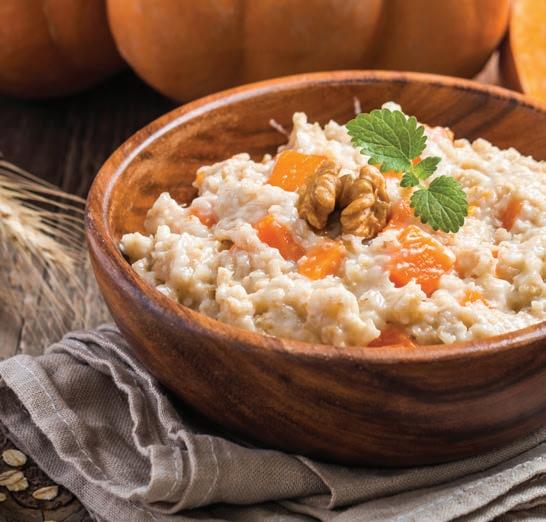
SUFFER FROM MIGRAINES?

If you’re among the 12 percent of Americans who suffer from migraines, omega-3 fats may offer some relief. In a recent study, people who ate a diet high in omega-3s reported shorter and less severe headaches than people who ate a typical American diet, which lacks this healthy fat. “The reduction in headache days per month that we saw was impressive,” says study coauthor Daisy Zamora. “It was similar to what we see with some medications that are being used as migraine preventatives and that’s very exciting.”
To up your intake of omega-3s, include salmon, tuna, herring, and sardines in your diet. Plant-based sources include flaxseeds, walnuts, and chia seeds. Also make a high-quality omega-3 supplement part of your daily regimen.

• Mix it into your morning oatmeal along with pecans and a touch of maple syrup.
• Stir it into plain yogurt with a drizzle of honey.
• Top pasta with a mix of pumpkin puree, garlic, and Parmesan cheese.
• Spread pumpkin puree on tortillas before adding your favorite quesadilla fillings.
• Top your chili with a dollop of pumpkin puree.
• Add a spoonful to your smoothie.
WWW.GREATERUPPERVALLEY.COM • 15
Oatmeal with pumpkin and walnuts
SKIP THE Sugary Drinks
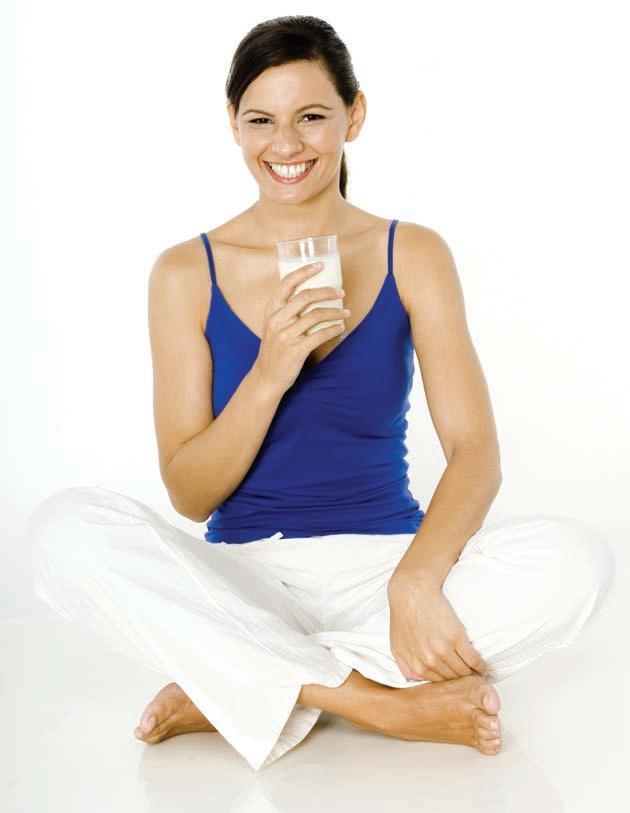
The rate of colon cancer among young Americans is on the rise, and a new study suggests that consuming too many sugary drinks may be to blame—at least for women. In the study of more than 95,000 women aged 25 to 42 who provided information on their diet for nearly 25 years, those who drank two or more sugar-sweetened beverages per day, such as soda, sports or energy drinks, or fruit drinks, had double the risk of developing colon cancer before they were 50 compared to women who consumed one or fewer sugarsweetened drinks per day. But substituting sugary drinks with milk, coffee, or beverages not sweetened with sugar was associated with a 17 percent to 36 percent lower risk of developing colon cancer before age 50.
Due to the increase in colon cancer in young people, the American Cancer Society now recommends regular screening starting at age 45.
VITAMIN C DEFICIENCY LINKED TO COGNITIVE IMPAIRMENT
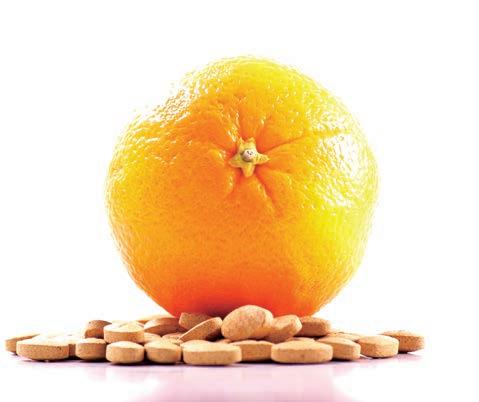
“Previous research has shown that vitamin C plays a significant role in the functioning of the brain, with studies finding that vitamin C deficiency may be associated with cognitive impairment, depression, and confusion,” says Yogesh Sharma, lead author of a new study that assessed the cognitive function and vitamin C status of 160 patients over age 75 admitted to the Geriatric Evaluation and Management Unit at the Flinders Medical Center in Adelaide, Australia.
A total of 91 patients were found to have cognitive impairment, while 42 were found to be vitamin C deficient. “Our findings showed that cognitive function scores were significantly lower among patients who were vitamin C deficient, with further analysis suggesting vitamin C deficiency was almost three times more likely to be associated with cognitive impairment after adjustment for other factors,” says Sharma.
word on health 16 image health watch • 2022
Take a Breather

If you’re feeling stressed or overwhelmed, take deep breath. Deep breathing has been shown to slow the heartbeat, stabilize blood pressure, and lower stress levels. It calms the mind and the body. Many breathing exercises may even support immunity—breathing through the nose has been shown to increase the concentration of nitric oxide in the airway, which studies have shown to reduce the ability of certain viruses to replicate.

GET YOUR VITAMIN D

Most vitamin D comes from sun exposure, so if the cool fall weather has you spending more time indoors, it’s important to take a vitamin D supplement. Vitamin D boosts your mood and immunity—important concerns this time of year as the daylight dwindles and cold and flu season comes into full swing. It also strengthens bones and muscles and supports heart and cognitive health. Talk to your doctor about getting your vitamin D level checked, and look for a supplement containing vitamin D3, which is the natural form that your body produces from sunlight.

WWW.GREATERUPPERVALLEY.COM • 17
word on health

TEENS NEED SLEEP
A new study finds teenagers who sleep less than eight hours a night may be at an increased risk for obesity. Kids who got less than seven hours were 21 percent more likely to be obese at age 12 and 72 percent more likely at age 14, compared to those who got more than eight hours. If you have teenagers, make early bedtimes a priority.

WALK YOUR WAY TO A LEAN BODY
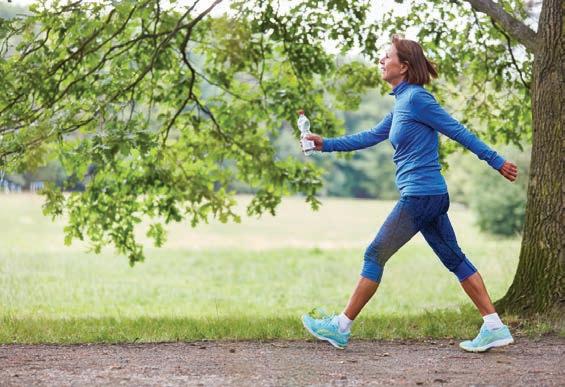
There are many reasons to take a walk—it helps improve cardiovascu lar fitness, joint mobility, and even psychological health while helping you shed excess pounds. Accord ing to the Mayo Clinic, a 30-minute brisk walk every day could burn more than 150 calories a day. The more you walk and the quicker your pace, the more calories you’ll burn.
To increase the calories you burn, try the following:

• Wear a weighted vest. This will encourage your body to work harder and burn more calories. Unlike ankle and wrist weights or carrying dumbbells in your hands, a vest will distribute the weight evenly to help avoid imbalance and injury.
• Walk uphill. Incorporate hills into your routine a few times a week or increase the incline on your treadmill.
• Power walk in intervals. First walk for about 5 to 10 minutes to warm up, then increase your pace and continue at an uncomfort able but sustainable pace for 10 to 15 seconds before returning to your normal pace. Repeat this throughout your walk.
18 image health watch • 2022
 well | BY E. SENTEIO
well | BY E. SENTEIO
THE MAGIC MYTH OF 10,000 STEPS
STEP IT UP FOR TOTAL FITNESS

20 image health watch • 2022
living
FOR YEARS THE FITNESS COMMUNITY HAS EMBRACED
THE IDEA THAT 10,000 STEPS PER DAY is the magic number for health and longevity. Few have questioned that number, assuming there is a scientific basis to the often recommended quotient. There is not. The myth of 10,000 being the path to health originated in Japan when a watchmaker, building on the excitement of the 1964 Tokyo Olympics, mass-produced a pedometer, the Manpo-kei (translation: 10,000 steps meter). The assumption is he chose the number because the Japanese character for 10,000 (vaguely) resembles a walking person. The myth was born, propagated, and widely embraced.
NOT JUST MOVEMENT, BUT MUSCLES
Cardio is great, but for overall health, work your muscles. Minimize the chance of falls and strains, increase flexibility and balance, and burn more calories by working the major muscle groups: shoulders, chest, back, arms, abdominals, and legs.
Find a muscle-strengthening option that works for you:

• Machine or free weights
• Resistance bands
• Body resistance (e.g., push-ups, lunges, sit-ups, planks, pull-ups)
•
• Heavy yard work

WWW.GREATERUPPERVALLEY.COM • 21
Rowing
living well

Before you toss out your fitness trackers and prop up your feet, consider these statistics from the US Department of Health and Human Services:
• Half of all American adults have one or more preventable chronic diseases.
• Seven of the ten most common chronic diseases are favorably influ enced by regular physical activity.
• Nearly 80 percent of adults are not meeting the key guidelines for both aerobic and muscle-strengthening activity.
• Only about half meet the key guide lines for aerobic physical activity.

• This lack of physical activity is linked to approximately 10 percent of premature mortality.

22 image health watch • 2022
According to the World Health Organization: “Sedentary lifestyles increaseall causes of mortality, double the risk of cardiovascular diseases, diabetes, and obesity, and increase the risks of colon cancer, high blood pressure, osteoporosis, lipid disorders, depression, and anxiety.”
According to the World Health Orga nization: “Sedentary lifestyles increase all causes of mortality, double the risk of cardiovascular diseases, diabetes, and obesity, and increase the risks of colon cancer, high blood pressure, osteoporosis, lipid disorders, depression, and anxiety.”

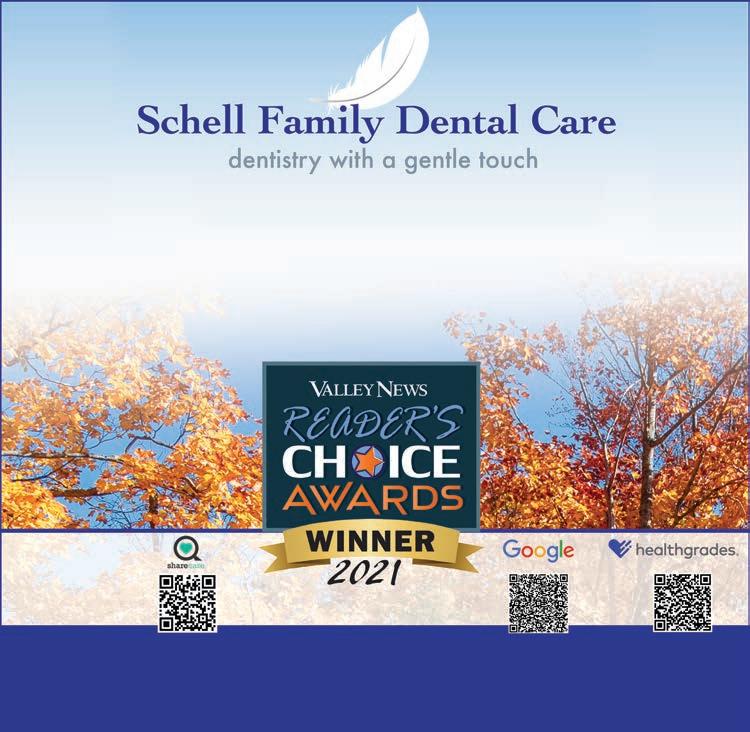
If a goal of 10,000 steps a day gets you moving rather than lounging around, maybe it has a bit of magic to it after all. How fast an individual walks will vary based on several factors, including fitness level, age, and pace. Walking speeds usu ally range between 2.5 to 4 miles per hour. Moving at an average pace of 3 miles per hour, it will take one hour and 40 minutes to reach 10,000 steps. Make 22 of those minutes a brisk walk each day, and you’ll also achieve your 150 minutes fitness goal. So, if counting steps works for you, keep at it—just step it up and benefit from the best of both fitness options.

Actual scientific studies (not pe dometer marketing campaigns) show that how long and often a person exercises have the most significant impact on overall health. The cur rent US guidelines suggest at least 150 minutes per week of moderateintensity physical activity. That breaks down to 30 minutes five days a week, or approximately 22 minutes seven days a week. The goal of 150 minutes doesn’t include activities of daily life, like strolling to your mailbox or crossing a grocery store parking lot; consider those perks beyond your physical activity goals. They matter, but they don’t count. Well, they don’t count in your 150 minutes, but they do count toward your step goal.
Although the origin of 10,000 steps was not based on science, the biggest benefit from the widespread myth is that it gets people moving. It provides a specific, and for most people, attain able goal. Walking 10,000 steps a day won’t hurt you, and while it is not a magic number for health and longevity, it may help.
WWW.GREATERUPPERVALLEY.COM • 23
BY KATHERINE P. COX
UNDERSTANDING SKIN CANCER

SCREENINGANDSUNPROTECTIONAREKEY
The numbers paint a grim picture. More than 9,500 people are diagnosed with skin cancer every day, according to the Skin Cancer Foundation. “We see a lot of skin cancer up here,” says Dr. Jose Peraza of Peraza Dermatology Group, which has locations in Claremont, Lebanon, New London, and Windsor. “It’s almost an epidemic, especially in people over 60.” The good news is that skin cancer is treatable, and even the most serious type of skin cancer, melanoma, can be treated if caught early.
24 image health watch • 2022

WWW.GREATERUPPERVALLEY.COM • 25
The good news is that skin cancer is treatable, and even the most serious type of skin cancer, melanoma, can be treated if caught early.
BASAL-CELL CARCINOMA
SQUAMOUS CELL CARCINOMA
MELANOMA
Basal Cell Carcinoma
Basal cell carcinoma is the most common form of skin cancer. “We see it mostly in people over 50, usually in sun exposed areas of the body that have been significantly damaged by the sun over the years,” Dr. Peraza says. “It’s unaggressive in most cases and not that worrisome when caught early. On the face we treat it with much more respect than below the neck. It can be somewhat dangerous if it gets near vital structures like the eye or the nose because it can invade these structures and then be difficult to remove.” When caught early, it’s mostly treatable with 95 percent assurances that it’s gone, he says, and it’s not a type of metastatic cancer that can spread.

Dr. Dan Peraza of Peraza Dermatology Group says, “We like to impress upon our patients that if the skin is behaving in a way that’s abnormal, such as a spot that is bleeding or doesn’t look or feel right, that’s a reason to come in.” Dr. Jose agrees. “Any part of your skin that begins to change—in color, or is bleeding, or there is a scaly area—it should be evaluated, particularly if you’re over 50, have fair skin, have grown up with a lot of sun, or have a family history of skin cancer.” Most of the skin cancers they diagnose are basal cell, he says.
There are lots of treatment pathways, Dr. Dan says. Usually a suspicious spot will be biopsied, and depending on the clinical evalu ation, treatment options are discussed. “If it’s superficial we can use creams, we can do Mohs surgery, there’s superficial radiation therapy, and there’s also electrodesiccation curettage. Depending on where they are, you can discuss treatment options with a dermatologist.”
Squamous Cell Carcinoma
“Squamous cells are classically in areas of heavy sun exposure,” Dr. Dan Peraza says. “The face, the ears, the scalp, backs of the hands, the lower legs. People who are faircomplected are at higher risk for developing squamous cells than people who are darker complected. Tanning beds have increased the risk of squamous cells as well. Some can be more aggressive than basal cells—they some times can spread around the body especially if they’re on the lips or ears—and there are
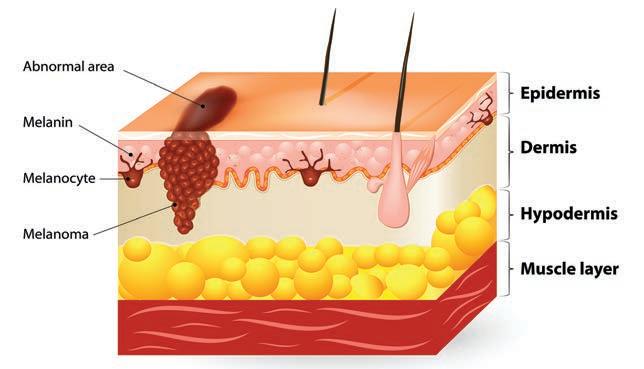

26 image health watch • 2022
some high-risk types of squamous cells that can spread to the lymph nodes.”
Squamous cell carcinomas look a little crustier, he says, are raised, can be a hard spot, and can enlarge quickly. In some instances, depending on where they are, they can be painful if they affect the nerve tissues. They grow more rapidly than basal cells.
Treatment is similar to action taken for basal cell carcinoma, Dr. Dan says: surgery, Mohs surgery, radiation, and electrodesiccation and curettage. UV radiation is the primary trigger for squamous cell carcinoma.
Melanoma
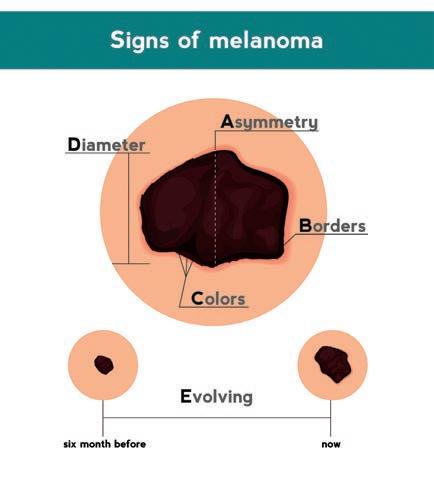
“The incidence of melanoma has been increas ing over the past several decades,” Dr. Dan says. “Melanoma causes a lot of anxiety, especially among people who have a relative who has had melanoma because they are at increased risk of melanoma themselves.” These spots can grow rapidly, he says, and can take years to develop. They appear on sun-exposed areas of the body but can also be found on areas that don’t receive a lot of sunlight. “Unlike basal cell and squamous cell, there’s not as clear a link between ultraviolet radiation and melanoma,” says Dr. Jose. It’s not as common as basal or squamous cell, but can be more lethal if not caught early, he says.
People should look for moles that appear to be enlarging, are darker, or have irregular shapes. “Any change in a mole should be evalu ated with a biopsy,” Dr. Jose says. “There are a lot of variables in moles that people need to be aware of and that need to be evaluated,” particularly if a family member has had melanoma.

“We see a lot of melanoma in young people,” he says, “people in their 20s and 30s. We nor mally don’t see basal cells in that age group, but we do see melanoma. It’s alarming.”
“If it’s detected early, usually the prognosis is better,” Dr. Dan says. It’s very treatable and he says there have been advances in medicine that can treat aggressive melanoma to improve patient outcomes. Melanomas are typically removed with surgery, and depending on depth, a lymph node biopsy may be needed, he says. If it’s more aggressive, immunotherapy regimens are initiated.
SIGNS AND SYMPTOMS OF SKIN CANCER
Abnormal
1. Asymmetry
2. Uneven borders
3. Color variation
4. Diameter (greater than 6 mm)
5. Evolving (change in size, shape, and color)
Normal mole
1. Symmetry
2. Even borders
3. Color uniform
4. Diameter (smaller than 10 mm)
Unchanging
GET THE FACTS about skin cancer, the most common cancer in the United States and worldwide.
• One in five Americans will develop skin cancer by the age of 70.
• More than two people die of skin cancer in the US every hour.
• Having five or more sunburns doubles your risk for melanoma.
• When detected early, the five-year survival rate for melanoma is 99 percent.
WWW.GREATERUPPERVALLEY.COM • 27
5.
Five Surprising Facts About Indoor Tanning
Is a tanning bed really safer than the sun? Will indoor tanning help your body make all of the vitamin D it needs?
Here are five research-backed facts that may surprise you.
1. Tanning beds are NOT safer than the sun. Science tells us that there’s no such thing as a safe tanning bed, tanning booth, or sun lamp. Indoor tanning can increase the risk of developing the two most common types of skin cancer—squamous cell carcinoma by 58 percent and basal cell carcinoma by 24 percent. Using tanning beds before age 20 can increase your chances of developing melanoma by 47 percent, and the risk increases with each use.
2.Tanning—indoors or with the sun—makes your skin age more quickly. Wrinkles, age spots, and loss of skin firmness tend to appear years earlier in people who tan. Anyone who tans can also develop leathery skin and people are treated for burns, loss of consciousness, and eye injuries caused by indoor tanning.
3. Getting a base tan cannot prevent sunburn. Many people believe that using a tanning bed to get a base tan will prevent sunburn. If you have a base tan, you can still burn.
4. Getting enough vitamin D from tanning beds isn’t possible. The bulbs used in tanning beds emit mostly UVA light; however, your body needs UVB light to make vitamin D.
5. There’s a safe way to look tan year-round. A self-tanner offers you a way to look tan without increasing your risk of developing early wrinkles, leathery skin, and skin cancer.

For more information, visit the American Academy of Dermatology, www.aad.org.

28 image health watch • 2022
Prevention and Precautions
“We live in an area of the country where people are active outdoors. It’s a beautiful area to live in, and I encourage my patients to be outdoors,” Dr. Dan says. “But I impress upon my patients to respect the sun. Take sun protection seriously. Wear protective clothing, whether it’s a hat or long sleeves. Liberally apply a sunscreen or sunblock with a protection against UVA and UVB and with an SPF of over 30 and reapply regularly, every several hours.”
In their practice, Dr. Dan Peraza and Dr. Jose Peraza suggest avoiding chemical sunscreens and using physical sunscreens with zinc oxide and titanium dioxide instead. But the best sun protection, Dr. Jose says, “is common sense and clothing. You have to wear a hat that covers the back of your neck and the ears. If you’re going to be outside for a long time, you have to cover up even more. The more you can do, the better.” It’s not just during the summer that people should be careful about sun exposure. People should wear sunblock every day, Dr. Dan says. In winter, bodies are more covered, but the face and ears are exposed and should be protected. “Lip protection with a sunblock is really important as well,” he says.

This protection should begin early in life, he says. “Avoid sunburns. There’s a relationship between the number of sun burns in childhood and adolescence and melanoma later in life. By all means, do not go into tanning salons. A tan is basically a response of your skin to injury from the sun. You’re causing molecular genetic damage to the cells. Tanning salons give you UVA, which is quite penetrating and causes damage deep in the skin.”
Continual exposure to the sun causes all kinds of damage to the skin over the years, Dr. Jose says. In addition to skin cancer risks, you’ll look older and more wrinkled earlier. If concern about the risks isn’t an incentive to stay out of the sun and tanning beds, “I try to appeal to people’s vanity. A 30-year-old with lots of sun damage will look 10 years older than she should,” he says.

In their practice, Dr. Dan Peraza and Dr. Jose Peraza suggest avoiding chemical sunscreens and using physical sunscreens with zinc oxide and titanium dioxide instead. But the best sun protection, Dr. Jose says, “is common sense and clothing.”
Peraza Dermatology Group
367 Route 120, Suite A1

Lebanon, NH (603) 542-6455 www.perazaderm.com
Other locations in Claremont, New London, and Windsor.
WWW.GREATERUPPERVALLEY.COM • 29
Dr. Jose Peraza and Dr. Dan Peraza.
BY ANNE RICHTER ARNOLD
THE Sober Curious MOVEMENT

30 image health watch • 2022
CELEBRATE THE CHOICES
We have all heard of Dry January and Sober October, but since the beginning of the pandemic another movement to find moderation in alcohol consumption has become popular. Sober Curious differs from traditional sobriety by offering a looser concept rather than a strict guideline. To be Sober Curious is simply an acknowledgement of the negative effects alcohol can have on your life, and the desire to do something about it.

WWW.GREATERUPPERVALLEY.COM • 31
Unlike mainstays in sobriety such as Alcoholics Anonymous, the Sober Curious movement does not require meetings, 12 Steps, or any specific program, although some have de veloped out of the movement. It is for people who want to examine their choices regarding alcohol and explore what sobriety means and can do for them to improve their lives.

“Gray-Area” Drinking Testing out sobriety is not a new concept. Dry January is a campaign started in the Unted Kingdom in January 2014 by the British nonprofit Alcohol Change UK, founded in 1984, whose mission is to reduce the harm caused by alcohol. Since its incep tion, the Dry January movement has spread throughout Europe and the
United States, both formally with online support and as a grass-roots social experiment through word of mouth.
Sober October began in 2010 when the Australian youth health organi zation Life Education raised money with its “Ocsober” fundraiser. The term Sober October is credited to Macmillan Cancer Support, a UKbased cancer charity, which used the concept for awareness and fun draising.
Unlike these two initiatives, a So ber Curious lifestyle can happen any time. It addresses “gray-area drinking,” defined as the spectrum between moderate social drinking and alcohol abuse. For many grayarea drinkers, saying no to the sec ond or third drink can be difficult,
32 image health watch • 2022
During the pandemic, consumption of alcohol rose, especially for women. A Rand Corp. survey of 1,540 adults determined the number of days in which Americans drank rose 14 percent during a month-long period in the spring of 2020, compared with the same period in 2019.
Mocktails to Celebrate the Season

and they may often consume more than they intend.
According to Ruby Warrington, author of Sober Curious and The Sober Curious Reset, the concept of Sober Curious en compasses questioning or being curious about “every impulse, invitation, and expectation to drink, versus mindlessly going along with the dominant drinking culture.” Sober Curious, published in 2018, is deemed to have started the global move ment to examine gray-area drinking and personal choices. As a socially acceptable drug of choice, per Warrington, alcohol use must be examined and questioned personally to find the right balance, whether it be abstinence or moderation.
Coping During a Stressful Time
With the risk of many health issues raised due to alcohol consumption, including cancer, depression, diabetes, and, of course, liver disorders, the movement seeks not only to improve physical but mental health as well. Alcohol was used as a coping mechanism during the pan demic, research shows, and the increased anxiety has led the medical community to look at the mental health implications of gray-area drinking. During the pandemic, consumption of alcohol rose, especially for women. A Rand Corp. survey of 1,540 adults determined the number of days in which Americans drank rose 14 percent during a month-long period in the spring of 2020, compared with the same period in 2019. And an American Psychological Association poll of 3,013 adults found that 23 percent acknowledged drinking more to cope with stress during the pandemic. Beth F. took some time to be Sober Curious last year. “The Sober Curious movement, like Dry January or Sober October, provides encouragement—a helpful nudge to push the reset button and evaluate your habits. I participated because I was questioning my after-work glass(es) of wine. Am I having this be
Mock Colada

Makes 1 drink
2 Tbspfreshlysqueezedlimejuice
K cuppineapplejuice
2 Tbspcoconutmilk
1 Tbsphoney
N cupcoconut-flavoredseltzer
1 wedgefreshpineapple
Add 3 to 4 ice cubes to a cocktail shaker, plusthelimejuice,pineapple juice, coconutmilk,andhoney. Cover andshakeuntilhoneyisdissolved. Straininto a glassfilledwithcrushed ice. Top offwiththeseltzer.Garnish with a pineapplewedge.
Cranberry Spritzer
Makes 4 cups
12 ice cubes
2K cupsofseltzer
2 cupscranberryjuice
1 Tbsphoney,or to taste
1 orange,thinlysliced
Place ice cubesinto a large pitcher. Add seltzerandcranberry juice. Mixinhoney. Add orange slicesandstir to combine.

Magic Apple
Makes 1 drink
2 oz Ritualwhiskeyalternative
2 oz appleciderorapplejuice
2 dashesbitters
Cinnamonstick Appleslice
Optional: A sprigofrosemary
Combinefirstthreeingredientsin a tall glass with ice. Stiruntilcold.Pour over fresh ice, garnishwithcinnamonstick, anappleslice,and a sprigofrosemary andserve.
WWW.GREATERUPPERVALLEY.COM • 33
According to Nielsen research, nonalcoholic beverage sales totaled $331 million (up 33.2 percent) from 2020 to 2021, while low-alcohol sales rose 8.1 percent to $2.77 billion, equating to a 315 percent increase in low- and no-alcohol beverage dollar sales.
cause I enjoy it, or because I need it?

In my experience, the beginning was challenging, and then I realized that I had more energy, less bloating, and was spending less money. All good things! Did I stay completely sober? No. But it does force me to examine my behavior and see if I’m choosing moderation or tipping toward excess.”
Annie Grace, founder of This Naked Mind, LLC, and author of The Alcohol Experiment, believes that moderation is a path to a more sober lifestyle. Her program’s mission is to allow anyone to experiment with and question the role of alcohol in their life by taking a 30-day alcohol-free challenge. For the Sober Curious, this and other similar short-term programs can be beneficial without the long-term abstinence pro posed by programs like AA. Online com munities like Club Soda (joinclubsoda. com) provide support and resources for those interested in a sober lifestyle, whether temporary or permanent.
Nonalcoholic Options
The rise in nonalcoholic cocktail and beverage offerings has made being Sober Curious a mainstream lifestyle supported by the beverage industry. According to Nielsen research, non alcoholic beverage sales totaled $331 million (up 33.2 percent) from 2020 to 2021, while low-alcohol sales rose 8.1 percent to $2.77 billion, equating to a 315 percent increase in low- and no-alcohol beverage dollar sales.
Gary Haugh of Athletic Brewing Com pany, which produces craft nonalcoholic beer, has seen sales rise by more than 500 percent since 2019. “Our customer base is a broad demographic of people that our owners John and Bill like to call ‘flex-sober.’ Eighty percent of our cus tomers drink alcohol at other times but nowadays they let the occasion dictate the alcohol content, not the other way around. People have definitely become
34 image health watch • 2022
more curious and mindful since the pandemic began.”
In a The Drinks Business article from January 2022, Emily Neill, COO of IWSR Drinks Market Analysis, commented that, “While Dry January has become a popular month for people to cut back or abstain from alcohol, interest in no- and low-alcohol drinks has in creasingly become a year-round trend among consumers across the world. And with 58 percent globally drinking more nonalcoholic and low-ABV cocktails than in the prior year, according to the 2022 Bacardi Cocktail Trends Report, demand for premium beverage options is expected to continue to grow.”
For the Sober Curious, options abound. Specialty nonalcoholic bev erages are for sale at supermarkets and on premises, including craft cocktails sans alcohol. There are alcohol-free cocktail home-delivery subscriptions like Curious Elixirs. Various locations in urban areas specialize in nonalcoholic offerings, like the trendy Getaway in New York City. The Zero Proof website even offers Booze-Free City Guides to find locations in places like Charleston, Boston, and Los Angeles for the Sober Curious.
While society accepts alcohol as a part of everything from joyful celebrations to coping with stresses like a breakup or a job loss, the Sober Curious move ment challenges these social norms and gently asks the question: What is alcohol’s impact on my life? Adopting a Sober Curious lifestyle, whether for a few weeks, a month, or indefinitely, allows you the opportunity to see how sobriety or moderation might fit into your life and examine the benefits. Warrington’s book Sober Curious poses the questions: How different would your life be if you stopped drinking on autopilot? If you stopped drinking altogether? For many, the time is right to
out.
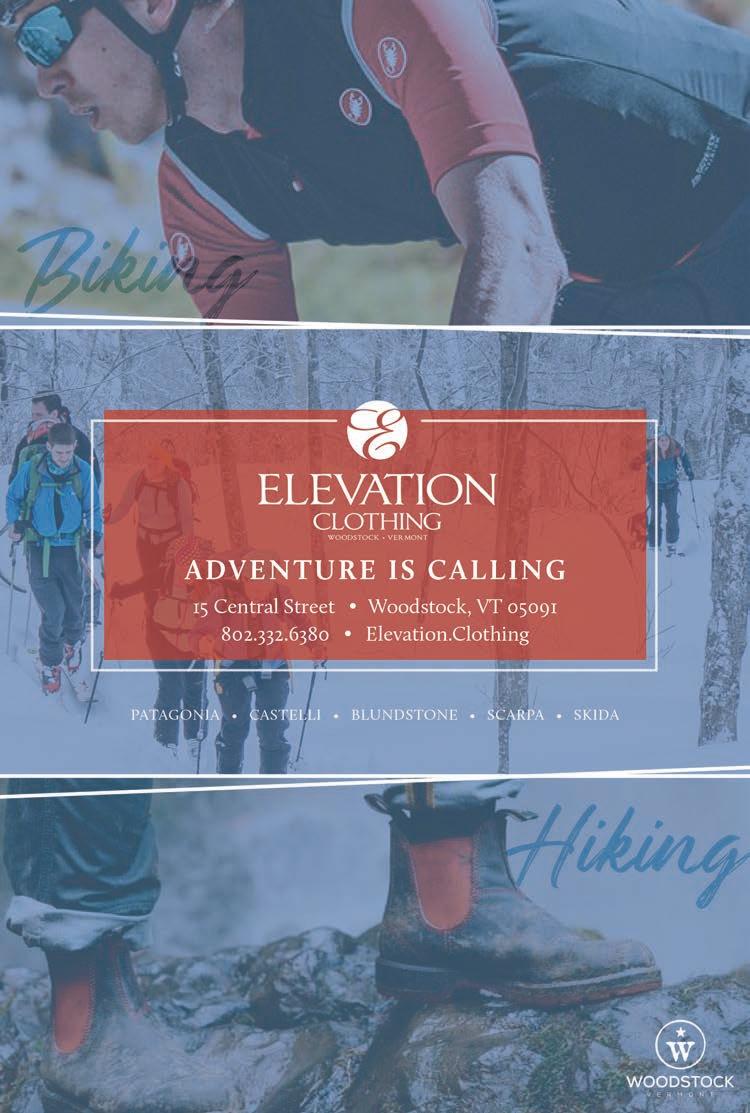
WWW.GREATERUPPERVALLEY.COM • 35
find
“Our customer base is a broad demographic of people that our owners John and Bill like to call ‘flex-sober.’
Eighty percent of our customers drink alcohol at other times but nowadays they let the occasion dictate the alcohol content, not the other way around. People have definitely become more curious and mindful since the pandemic began.”
—Gary Haugh, Athletic Brewing Company
BY SUSAN NYE

36 image health watch • 2022
APRACTICEFORLIFELONGPHYSICAL ANDMENTALWELLNESS

WWW.GREATERUPPERVALLEY.COM • 37
Practicing yoga gives you the freedom to learn more about yourself and your body as you work through a series of poses.
ARDHA MATSYENDRASANA, seated twist.
If you are a person of a certain age, you may have noticed that each birthday seems to bring a few more aches and pains. Just as bad, a little snow or ice in the post office parking lot makes you more than a bit nervous. And should we mention that your strength and stamina are not what they used to be? Put all these things together and it might be a good time to start a yoga practice.
If you’ve always thought that yoga was reserved for skinny, young women in spandex, it’s time to think again. From preschool to long-out-of-school, yoga is for everyone and especially good for seniors. A regular yoga practice will help build strength, improve balance, and increase flexibility.

A Practice, Not Perfection
Yoga provides a workout for both the mind and the body. Unlike many forms of exer cise, practitioners are never admonished to push through the pain. Instead, they are encouraged to respect how they feel physically and mentally on that particular day at that particular hour. Yoga is never about competition or driving toward a personal best. Instead, it is a journey and a highly personal one at that.
38 image health watch • 2022
PARSVA SUKHASANA, seated side bend.
AN ANCIENT TRADITION
Yoga has been practiced for thousands of years in India. It first became popular in the West in the mid 20th century.
While most have their roots in hatha yoga, a number of different styles have developed.
Hatha Yoga
Hatha yoga gets its name from the Sanskrit words for sun and moon. Students move through poses to de velop strength and flexibility along with physical and men tal energy.
Vinyasa Yoga
Vinyasa yoga links breath and movement in a continuous flow of different postures. The flow can be slow, dynamic, or mindful.
Kripalu Yoga
Kripalu is a gentle hatha yoga practice that emphasizes meditation, physical healing, and spirituality.
Ashtanga Yoga
A very physical flow-style yoga, ashtanga is made up of six different series of specific poses.
Bikram Yoga
Also called hot yoga, Bikram is very physical, and classes are given in rooms set at 105 degrees with 40 percent hu midity. A set series of poses are performed in a specific order.
Yin Yoga
Practitioners slow down and hold poses in yin yoga to increase joint circulation and improve flexibility.
Restorative Yoga
Restorative yoga emphasizes alignment, rest, and healing.
Practitioners use props for support while holding and relaxing into poses for several minutes.
Kundalini Yoga
Kundalini yoga challenges both mind and body with chanting, singing, medita tion, breathing exercises, and repetitive poses to activate spiritual energy.
Iyengar yoga

Iyengar yoga focuses on alignment and precise move ments while controlling the breath.
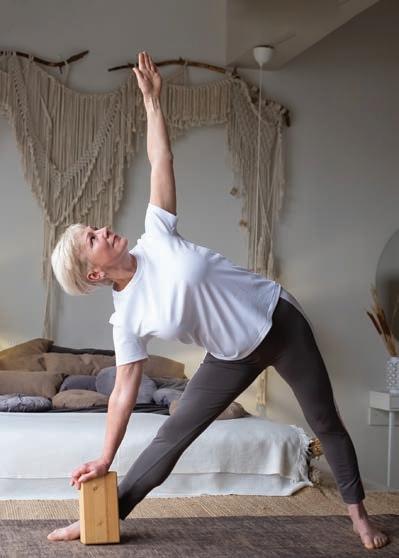
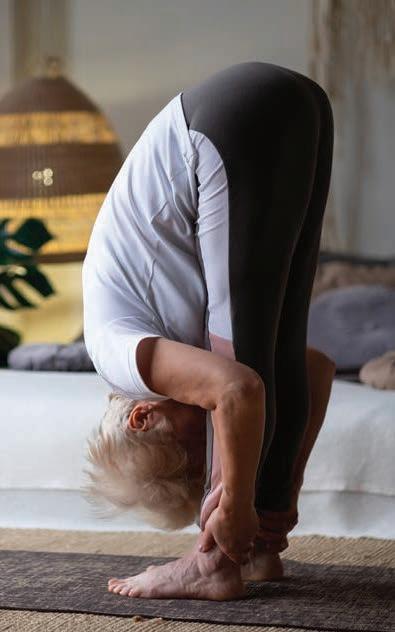
Chair Yoga
Developed for seniors and anyone with mobility issues, chair yoga adapts and modi fies poses so they can be done from a seated position or standing using the chair for balance and support.
WWW.GREATERUPPERVALLEY.COM • 39
UTTANASANA, forward fold.
TRIKONASANA, triangle.
“
YOGA HAS ITS OWN VOCABULARY
With its origins in India, Sanskrit is the language of yoga. Most instructors use a combination of English and Sanskrit when teaching. It doesn’t take long to become familiar with the names of often repeated poses—adho mukha svanasana (downwardfacing dog), virabhadrasana (warrior), surya namaskar (sun salutations), vrksasana (tree), and shavasana (corpse), to name but a few. Some key Sanskrit terms include:
Asana
Asana refers to the physical poses and postures practiced during yoga.
Pranayama
Pranayama refers to breath work or breathing techniques. Prana translates roughly to life force and yama means to control.
Drishti
Drishti is a focused gaze that helps practitioners maintain bal ance and concentration.
Namaste
Translating from Sanskrit, namaste means I bow to you. Typically said at the end of class, it is a respectful way for student and teacher to acknowledge their time together on the mat.
Shanti
The Sanskrit term meaning peace, shanti is often chanted three times to represent the threefold peace of body, mind, and spirit.
One of the joys of yoga is leaving your ego at the studio door. Practicing yoga gives you the freedom to learn more about yourself and your body as you work through a series of poses. If you’re stiff after a weekend hike or frazzled by a daunting project, you are encouraged to accept and honor your needs and adjust your practice. Most instructors start their sessions by reminding participants, “This is your practice. I’m only here to guide you. Listen to what your body wants and needs today.”
Practitioners are encouraged to let their instructors know if they have any physical issues. Whether it’s a sore shoulder, osteoporosis, high blood pressure, or any other issue, most instructors will offer modifications to insure everyone enjoys a safe practice. “It’s important to find someone who will meet you where you are and help you develop further—a teacher and a practice you can trust,” says Meghan MacLean, owner of Crescent Moon Wellness and Yoga in New London, New Hampshire.
There are several different styles of yoga, from the more athletic vinyasa to gentle restorative yoga. Practitioners are urged to find what’s right for them, as well as mix and match a few different styles.

40 image health watch • 2022
It’s important to find someone who will meet you where you are and help you develop further—a teacher and a practice you can trust,” says Meghan MacLean, owner of Crescent Moon Wellness and Yoga in New London, New Hampshire.
ADHO MUKHA SHVANASANA, downward-facing dog.
“Balance is more than standing upright. We look to find balance throughout our prac tice and in our lives,” says Kristin McGee, owner of the Yoga Connection in Grantham. Yoga is an excellent platform for discussing the philosophy and the importance of finding balance.
Building Strength
“As we age, we lose muscle mass and strength,” says Judy Thackaberry, a certified yoga instructor at the Hogan Center at Colby-Sawyer College. Along with her teach ing, Judy is a physical therapist at Granite VNA and a board-certified geriatric specialist in physical therapy. She says, “Practicing yoga can offset the aging process and build strength for everyday activities.”
Even better, it does so without a lot of expensive spe cial equipment. Instead of lifting barbells and working pulleys, yoga uses movement and the body’s weight to increase strength and tone muscles. “Using body weight to build strength is low impact and puts less stress on the body,” says Meghan. From the notorious downwardfacing dog and plank to squats and lunges, different poses or asanas tone and strengthen core muscles as well as the upper and lower body. Unlike weight train
ing regimes that isolate muscles and movements, many yoga routines or flows provide a whole-body workout.
Finding Balance
The ice and snow will soon be back. Slips and falls are a serious concern for seniors. Yoga is one of the best ways to maintain or improve balance. Meghan says, “With yoga, everything starts with developing core strength, which is the key to balance.” Along with building core muscles, participants work their bodies from tip to toes to gain strength and alignment for better balance. Poses like mountain and tree encourage participants to stand straight and tall.
However, “Balance is more than standing upright. We look to find balance throughout our practice and in our lives,” says Kristin McGee, owner of the Yoga Connection in Grantham. Yoga is an excellent platform

WWW.GREATERUPPERVALLEY.COM • 41
Virabhadrasana II, warrior II.
for discussing the philosophy and the importance of finding balance. She says, “Yoga is a practice of effort and ease; we inhale and exhale. Throughout our ses sions, we stay mindful of the importance of balance—both physical and mental, in life and in work.”
Improving Flexibility
With age comes a certain stiffness and pain in the muscles and joints. “Too many people shy away from yoga. They’ve bought into myth that they can’t do yoga because they aren’t flexible,” says Kris tin. Nothing could be further from the truth. “You practice yoga to develop and maintain flexibility,” Kristin says. “Even if you can’t do all the poses, you can still work with your body. There are always variations that will help you progress.”
A regular yoga practice improves circu lation and builds muscle for better flex ibility. Gentle, long duration poses in key areas help reduce tightness and pain while improving mobility and flexibility. Deep breathing and slow, steady movements encourage muscles to relax, allowing yogis to ease into and hold asanas.
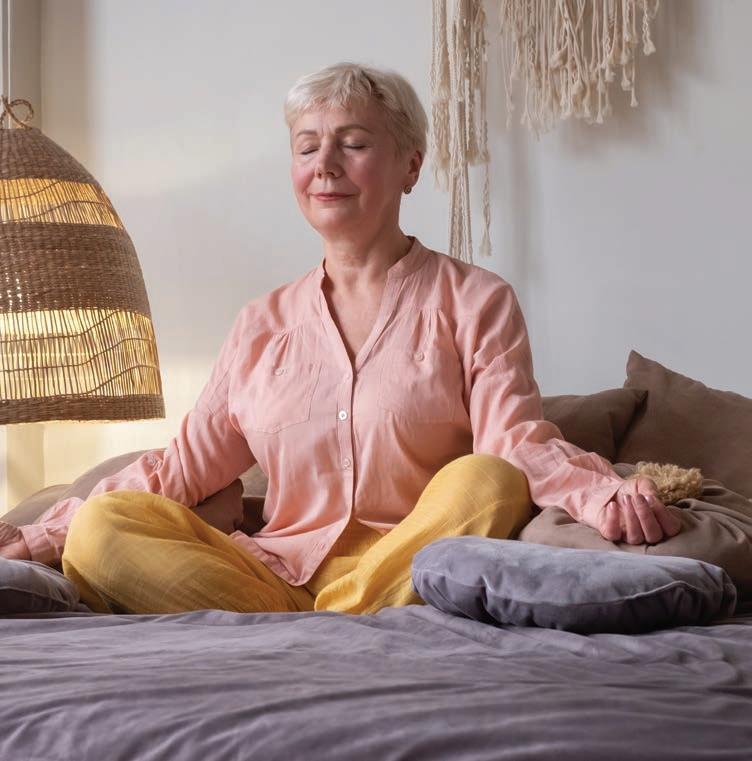
Managing Stress
From the price of gas and groceries to the latest COVID surge and who knows what else, our lives are filled with a multitude of stressors. Most doctors recommend movement and exercise for overall health as well as stress management. Yoga is particularly good at providing both.
Instead of letting your mind wander to dredge up past mistakes and worry about an unknown future, yoga encourages practitioners to stay in the moment. Over time, a regular practice creates a mindful connection of body, mind, and spirit. “I love yoga. It is a big part of my life and has been for 30 years,” says Kathleen Titus, a nurse who recently relocated to Sutton. She continues, “Especially during stressful times—like moving—I go back to the breath and it grounds me physically and mentally.”

42 image health watch • 2022
“I like the camaraderie of my yoga friends.” Pat says she has found an added bonus: “I love that it is some thing that I share with my kids and grandkids.”
—Pat Clemens of New London
NAVASANA, boat pose.
SUKHASANA, easy pose.
Meghan agrees that yoga is a help ful tool for managing stress. “Rather than reduce it, yoga helps you navigate stress. Yoga encourages you to stay in the moment, focus on the pose and—most important—to breathe,” says Meghan.
Developing Community
Social isolation and loneliness can lead to many physical and mental health issues, and seniors are most at risk. While many yogis practice at home alone or with an online class, joining a local studio or gym helps seniors stay connected. During class there is little, if any, chatter. However, the positive energy developed in class can’t help but encourage conversations before and after. Bonds of friendship are common among participants.
Pat Clemens of New London started practicing yoga more than 10 years ago. The retired elementary school teacher’s key goals are flexibility and balance. Although she sometimes practices at home, Pat says, “I like the camaraderie of my yoga friends.” Pat says she has found an added bonus: “I love that it is something that I share with my kids and grandkids.”
Sharing Positive Energy
Most yogis leave class smiling, relaxed, and filled with positive energy. As part of that positive energy, most practices end with a metta prayer or meditation. Along with thanking participants for sharing their practice, an instructor will send everyone off with good wishes. A frequent and favorite metta prayer of loving kindness is may you be happy, may you be healthy, may you be safe, and may you live with ease . . . namaste.
Susan Nye lives in New London where she practices yoga several times a week. She writes for magazines and newspa pers throughout New England and shares stories and recipes on her award-winning blog, Around the Table, at www.susannye. wordpress.com.
WHERE TO PRACTICE
Hogan Sports Center
Colby-Sawyer College
541 Main Street
New London, NH (603) 526-3600
www.colby-sawyerathletics.com
Crescent Moon Wellness and Yoga
428 Main Street
New London, NH
www.crescentmoonwellnessnh.com
The Yoga Connection
149 Route 10 North Grantham, NH (603) 863-1798

www.yogaconnection.us
The Studio
1011 North Main Street
White River Junction, VT (802) 698-8160 www.thestudiouv.com
WWW.GREATERUPPERVALLEY.COM • 43
Valley Vision

River Valley Club
33 Morgan Drive Centerra Plaza, Lebanon, NH (603) 643-7720

www.RiverValleyClub.com

Mon–Thu 4:45am–9pm

Fri 4:45am–8pm
Sat–Sun 7am–5pm
Healthy Choices
ohnson u iolo y


O er ears perience

2 Dorrance Place Hanover, NH H ohnsonau iolo yhearin com
Strong House Spa
Discover our new Wellness Lounge

694 Main Street Quechee, VT (802) 295-1718

www.stronghousespa.com



ift ertificates Online


pper alley usiness lliance
377 North Main Street West Lebanon, NH (603) 448-1203 uppervalleybusinessalliance.com

Colonial Pharmacy
port oa e on on H (603) 526-2233
www.ColonialPharmacy.com

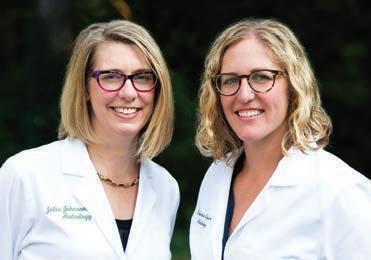

Mon–Fri 8am–8pm Sat 8am–6pm Sun 8am–5pm
Stateline Sports
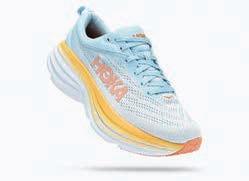
ri e treet

West Lebanon, NH (603) 298-8090
Mon–Fri 9am–6pm Sat 9am–5pm
ye lass Outlet
24 Hanover Street #3
On the all Lebanon, NH (603) 448-0030
Mon–Fri 11am–5pm

e
44 image health watch • 2022
Throughout the Valley
Allen Pools & Spas

227 Mechanic Street, Suite A Lebanon, NH (603) 410-5900 allenpools-spas.com
Mon–Fri 9am–5:30pm
Sat 9am–4pm
Sun 10am–2pm
Hill Opticians & Gallagher Eyecare


53 South Main Street Hanover, NH (603) 643-2400 www.hillopticians.com hillopticianshanover@gmail.com
Mon–Fri 9am–5pm
Quechee Cuts

6985 Woodstock Road Quechee,VT (802) 291-2648
Mon 9am–2pm Tue, Wed 9am–4pm
Thu 10am–6pm, Fri 9am–4pm
Sat 9am–12pm
The Gilded Edge Frame Shop & Gallery

69 Hanover Street Lebanon, NH (603) 643-2884
Wed–Fri 10am–6pm
Sat 10am–5pm
By appointment ONLY
Hubert’s Family Outfitters
219 County Road New London, NH (603) 526-4032 www.Huberts.com
Mon–Fri 9:30am–6pm
Sat 9am–6pm
Sun 10am–4pm
ANICHINI 802
Luxury Textiles & Soft Furnishings

6931 Woodstock Road Quechee, VT (802) 698-8813 www.anichini.com/vermont
Design Consultations & Personal Shopping
Open 7 Days A Week
River Road Veterinary Clinic

Large, Small and Exotic Animals
445 US Route 5 North Norwich, VT (802) 649-3877 www.riverroadveterinary.com rrvcvt@gmail.com
Office hours by appointment
New England Beauty & Wellness

New London–Lebanon, NH (603) 877-0070
www.newenglandbeautyandwellness.com

By appointment only Now Offering Medical Aesthetics!



Align Body & Mind
Skincare Therapy
Village House at 1 School Street Lebanon, NH (802) 578-4009 www.alignvt.com alignvt@gmail.com
WWW.GREATERUPPERVALLEY.COM • 45
right balance
E. SENTEIO
Most nutrient requirements can be met through a healthy, well-balanced diet. But when your diet falls short, supplements might take up the slack.

46 image health watch • 2022 the
| BY
THE NUTRIENTS TO KEEP YOU FEELING FIT after 50

SUPPORT YOUR BODY’S CHANGING NEEDS
AS WE AGE, OUR NUTRITIONAL NEEDS CHANGE. While many of the recommended vitamins and nutrients we take at a younger age remain powerhouses for the aging body, the required doses will likely change. Our bodies may no longer absorb or produce nutrients like they once did. If medications have become a part of your regimen, they could also contribute to blocking or minimizing the effectiveness of nutrients.
If you are over 50, here are a few nutrients and the recommended daily allowance (RDA) that you may want to discuss with your health care provider at your next wellness visit.

WWW.GREATERUPPERVALLEY.COM • 47
CALCIUM
As you age, absorption levels decrease.
Calcium is essential not only for strong bones but for cellular and blood vessel function. While the mineral can strength en bones and stave off osteoporosis, it is also found in cells throughout the body, aiding nerves and muscles and even helping send signals to your heart to beat.
For those who choose not to eat dairy or are lactose intolerant, soybeans and soybean products like tofu are a great source of calcium. Beans are little nutrient bombs, rich in not only calcium but also magnesium and potassium


RDA: 1,200 mg for women and 1,000 mg for men.
VITAMIN D
As you age, your body is less efficient at converting sunlight to vitamin D.

This nutrient is nec essary for the absorp tion of calcium. While it is often considered a companion supplement, vitamin D deficiency may have links to cognitive decline, hypertension, and depression. Vitamin D helps brain cell generation and strengthens your immune system.
Some fatty fish may give you a vitamin D boost. Still, the best way to get the recommended dose is to spend brief amounts of time in direct sunlight, expose some skin, wear sunglasses and a sun hat, but do not overdo. Five to 15 minutes for a few days each week is sufficient. If you wear sun screen, which blocks UV rays, stay out longer and the sun will still seep in.
RDA: At least 600 IU; depending on your health, this dosage could be increased.
ZINC
As you age, zinc levels decline.
Zinc deserves a lot more credit than it gets. The often overlooked nutrient fights inflammation and infections and aids in wound healing, smell, and taste. Recent studies suggest it could slow the progression of age-related macular degenera tion, helping to preserve vision.
Oysters are loaded with zinc. Other options include nuts, beans, whole grains, meat, and poultry.

RDA: 8 mg for women and 11 mg for men.
VITAMINS B6 AND B12
As you age, it is harder for the body to absorb these nutrients.
Vitamin B6 is an immunity booster that may help with depression and memory. Vitamin B12 gets all the glory. It helps make blood and nerve cells and may improve cogni tive functioning. While there are claims that B vitamins give you energy, it is a deficiency that can cause fatigue. Both Bs are easy to get through diet because they are found in a wide variety of foods. Chickpeas pack a wallop of B6, and they’re easy and inexpensive. Onions, spinach, potatoes, meat, fish, and watermelon are other sources of these vital nutrients.
Vitamin B6 RDA: 1.5 mg for women and 1.7 mg for men.
Vitamin B12 RDA: 2.4 mcg for both men and women.
48 image health watch • 2022 the right balance
OTHER NUTRIENTS TO CONSIDER
MAGNESIUM

stabilizes blood sugar and is found in nuts, seeds, and leafy greens.
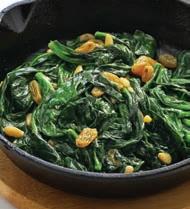

OMEGA-3s


protect against age-related diseases like Alzheimer’s, arthritis, and macular degenera tion. Try fatty fish, walnuts, canola oil, or flaxseed.
POTASSIUM is a significant player in nutri tional health, affecting the heart, kidneys, muscles, and nerves. Snack on dried fruits like apricots and raisins or green veggies like spinach and broccoli.

These are just a few key nutrients your body may be craving as you ease into the half-century mark. Most nutri ent requirements can be met through a healthy, well-balanced diet. But when your diet falls short, supplements might take up the slack. Before you restock your cabinets or up your dosage, keep in mind that each individual has dif ferent nutritional needs, and some supplements may not interact well with certain medications. Always check with your doctor about what is best for you and a long and healthy life.
Learn more about the Whole Body
Whole Person Difference

WWW.GREATERUPPERVALLEY.COM • 49
/
. . www. octorran .com 6985 Woodstock Road (Route 4), Quechee, VT

50 image health watch • 2022
SAFE ANESTHESIA IN AN OFFICE SETTING
SEDATION IS AVAILABLE FOR A RANGE OF PROCEDURES

ANESTHESIA PLAYS A CRITICAL ROLE IN THE MEDICAL INDUSTRY, and through her practice, Dr. Adrienne P. Williams, MD, provides safe sedation practices in officebased settings in the Upper Valley. As founder of Anesthesia Consultants of the Upper Valley (ACUV) in 2016, Dr. Williams, a board-certified adult and pediatric anesthesiolo gist, offers highly personalized care, collaborates with health care providers, and makes sure every patient is provided with the highest of standards, compassion, and safety.
“Nearly all of us will need sedation for a procedure at some point in our lives,” says Dr. Williams, who provides anesthesia at Dartmouth-Hitchcock Medical Center (DHMC) and other area hos pitals as well as three separate dental offices in the Upper Valley. “Prior to ACUV, some of these dental patients were traveling three-plus hours to reach locations where sedation was an option. Now, residents of the Upper Valley can stay in the Upper Valley to receive their care,” says Dr. Williams, who worked at DHMC from 2007 to 2016 and continues to provide pediatric anesthesia once a week at DHMC in the pediatric sedation unit.
Dental Care and More
Dr. Williams has provided care for patients of all ages in a dental setting where sedation is often needed, including an 18-year-old autistic child with the mental capacity of a two-year-old who had decaying teeth and refused an oral exam and an adult who required multiple dental procedures and had a severe needle phobia. “I’ve also been called in to help patients who have had a horrible dental experience as a child and have not been able to walk into a dental office in over a decade due to the anxiety it provokes,” she says.
WWW.GREATERUPPERVALLEY.COM • 51
in the know | EDITED BY PAMELA BROWN
“The list of possibilities is enormous, from podiatry to small orthopedic cases, gynecology, minor plastic surgeries, and more. I personally set upeach office to be a safe, efficient, and pleasant sedation practice site, and I personally provide all of the anesthetic care.”
TESTIMONIALS
“
We are so thankful to have found Dr. Adrienne Williams’ practice, Anesthesia Consultants of the Upper Valley. After eight years of debilitating pain, having a referral for ketamine infustions for two years but no clinic near our home and being waitlisted at the closest, it is amazing to have access to such high quality care and professionalism here in the Upper Valley.
Coordinating care between Dr. Adrienne Williams and my pain management provider at Dartmouth-Hitchcock for my unique goals has given me my life back.
My entire care network is very pleased with the progress we are making and would highly recommend ”—Newbury, VT
“I didn’t feel like just another patient. I felt like Adrienne took my personal situation seriously and the communication was fast and thorough. My anxieties around the treatments were put at ease and Adrienne was there every step of the way.
I was expecting to have a hassle with another medical center, but Anesthesia Consultants of the Upper Valley made it a pleasant and personal experience in a clean, professional atmosphere.” — White River Junction, VT
Private-practice doctors may utilize office sedation when they do not require the sophistication of an operating room’s level of care. “The list of possibilities is enormous, from podiatry to small orthopedic cases, gynecology, minor plastic surgeries, and more. I personally set up each office to be a safe, efficient, and pleasant sedation practice site, and I personally provide all of the anesthetic care.” ACUV strives to shorten wait times, decrease cost, and improve patient satisfaction.
Relief with Ketamine Infusions

ACUV’s wide selection of services include sedation dentistry, office-based anesthesia for minor surgical procedures, Concierge IV Ketamine Services, and Concierge IV Lidocaine Services. “Ketamine, an FDA-approved drug for sedation and anesthesia for procedural and diagnostic interventions, is proving to be a game changer in the fields of
“
I have suffered from persistent depression for years. Ketamine treatments have given me relief from my severe depression symptoms in a way that no other treatment has to date. Dr. Williams is a great communicator, very compassionate, and extremely competent. I highly recommend working with Dr. Williams.” —New London, NH
mental health and pain management for those with treatment-resistant conditions. Working through a different receptor than most psychiatric and pain medications (and thus modulating a unique neurotransmitter called glutamate in nerve cells), ketamine is proving to provide relief for those suf fering with previously difficult to treat major depression, anxiety disorders, PTSD, as well as certain chronic pain syndromes such as complex regional pain syndrome,” explains Dr. Williams. “After an induction series (six infusions for mental health conditions, each 40 minutes long and 6 to 18 infusions for chronic pain conditions, each two to four hours long), patients typically require a certain number of infusions every few weeks or months to maintain the benefit that they achieve.”
In 2020, Dr. Williams began providing ketamine infusions in a psychiatrist’s office in Hanover, New Hamp-
shire. Due to patient demand, she expanded beyond providing ketamine in just one office. In October 2021 she opened an office in White River Junction and is the only MD-owned and -operated ketamine provider in the Up per Valley trained in providing sedation drugs and board-certified in anesthesiology. In her office, Dr. Williams tends to one patient at a time, stays with the patient during the entire infusion and recovery phase, and is readily available outside normal office hours to connect with her patients and their health care team. “Comfort, privacy, high safety standards, and individualized care are what set my practice apart,” she says.
Safety First
Dr. Williams explains that ketamine is commonly used in operating rooms and emergency departments to treat pain, provide sedation, and reduce post-operative pain after big surgeries.
52 image health watch • 2022 in the know
KETAMINE INFUSION
“It is, however, not currently FDAapproved for the treatment of mental health conditions or chronic pain conditions, even though numerous studies have confirmed its efficacy as well as its safety profile.” She notes that because it is an older drug and therefore off-patent, it is quite possible that it will never receive the needed research required to meet FDA standards to be approved for treating these conditions. As such, the ketamine market currently is quite unregulated and patients need to be wary of “pop-up” ketamine clinics and ketamine “bars.” As a consumer, Dr. Williams encourages people to ask: Who will be administering the infusion? What training do they have? Is there an MD monitoring you? How many patients are being monitored at the same time?
While she still finds pleasure in hospital-based anesthesia, Dr. Williams is fulfilled helping others where previ ously no option for anesthesia/sedation existed. “To be able to watch someone shift from depressed to happy over the span of two to three weeks, or from anxious to relaxed, from 10 out of 10 pain to no pain, my patients give me the gift of purpose, and for that I am grateful.”
Dr. Williams earned a degree in bio logical sciences with an emphasis in neurobiology, physiology, and behavior from UC Davis. She completed medical school at Dartmouth Medical School in 2003 and her anesthesiology residency at DHMC in 2007. She has received the following awards: the University Medal (UC Davis) in 1999, the Dean’s Medal (Dartmouth Medical School) in 2003, and the Dripps Award (Department of Anesthesiology, DHMC) in 2007.
Anesthesia Consultants of the Upper Valley 205 Billings Farm Road, Suite #3E White River Junction, VT acuv.nh.vt@gmail.com anesthesia-consultants-nh-vt.com


WWW.GREATERUPPERVALLEY.COM • 53
DOROTHY L. HITCHMOTH, PLLC
EYE ON NUTRITION
WHAT YOU EAT MAY IMPACT HOW YOU SEE
RESEARCH SHOWS THAT A WIDE VARIETY OF PLANT-BASED NUTRI ENTS MAY STAVE OFF BLINDING EYE DISEASE and improve quality of life and longevity. A healthy diet and the proper use of supplements can lower the risk of degen erative diseases, including sight-robbing conditions such as macular degeneration, cataracts, glaucoma, and diabetic retinopa thy. The very nutrients that can the reduce risk of vision loss also help protect against other degenerative diseases of aging, such as Alzheimer’s, heart disease, and certain cancers. Discussing nutrition with your eye doctor can have far-reaching health benefits.
The simplest advice I give to patients is eat more fruits and vegetables. However, it is important to talk to your doctor, nutritionist, and behavioral health experts regarding your individual best path forward. Over 90 percent of vision loss is preventable.

54 image health watch • 2022 bright ideas | BY DR.
THE MEDITERRANEAN DIET

The last three decades have provided a plethora of research regarding the impact of nutrients abundant in the Mediterranean diet and the risk of developing age-related macular degeneration (ARMD). This research is important because ARMD is the leading cause of blindness in North America. The world-renowned AgeRelated Eye Disease Studies (AREDS), which have been ongoing for the last 30 years, have ultimately shown that there is a vitamin formula that is effective in delaying vision loss in some patients with this potentially devastating disease.
The latest scientific studies, including AREDS updates, confirm that eating fatty fish, olive oil, nuts, seeds, darkly colored fruits and vegetables, and other foods that comprise an authentic traditional Mediterranean diet are highly protective against ARMD development, progression, and visual decline. The same studies show that these nutrients also improve cognitive function in elderly ARMD patients.
WWW.GREATERUPPERVALLEY.COM • 55
bright ideas
A plant-based diet rich in balanced levels of fatty acids, carotenoids, vitamins, minerals, protein, and other antioxidants is critical for maintaining good vision. If you have a poor diet, take certain medications, or have specific medical conditions that rob your body of key nutrients, you may need nutritional supplements. However, as their name suggests, eye supplements are designed to add to, not replace, nutrients you get from a healthful diet.
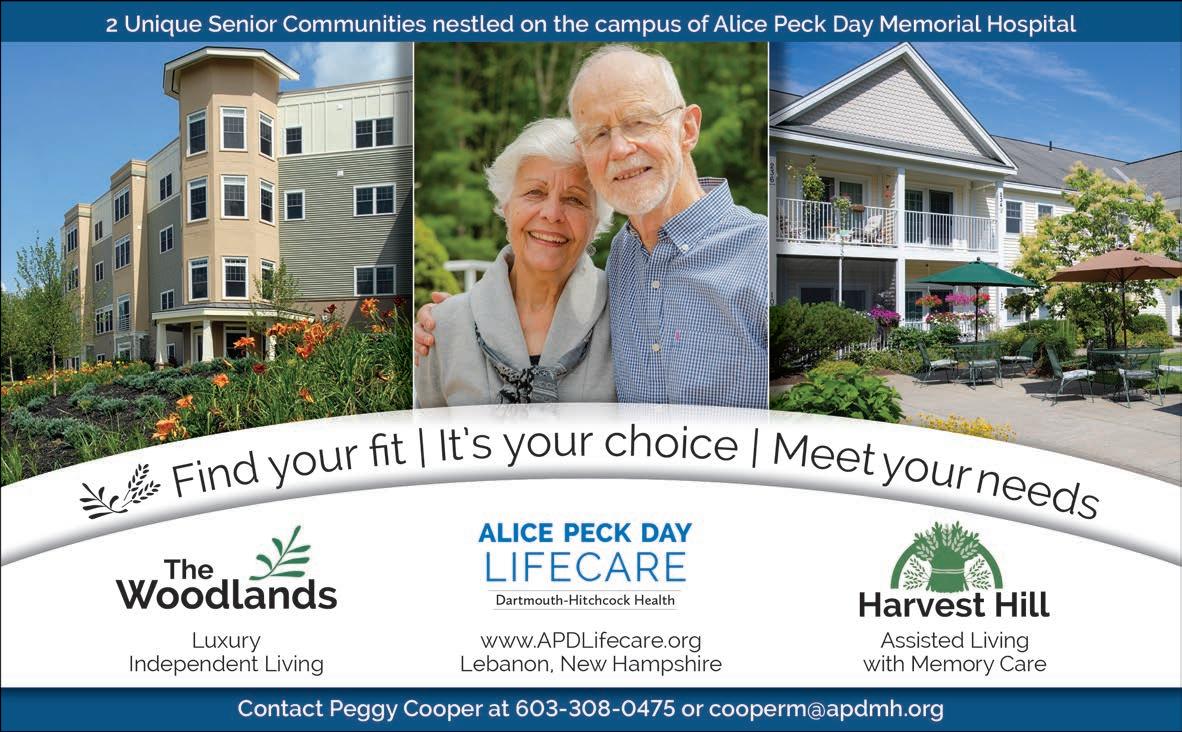
VITAMINS
Vitamins A, C, D, and E in mixed form (tocopherols and tocotrienols) and Bcomplex vitamins (B1, B2, B3, B5, B6, B12, folic acid, choline, and biotin) offer unique and synergistic benefits. For example, vitamin A may help protect against night blindness and dry eyes, while vitamin C may reduce the risk of cataracts and macular degeneration and help prevent or alleviate glaucoma.
56 image health watch • 2022
Along with vitamins A and C, vitamin E seems to slow the body’s normal oxida tion process, helping to prevent or slow the progression of age-related macular degeneration. Fruits, vegetables, nuts, seeds, beans, and animal meats are rich in these vitamins.
VITAMIN COFACTORS AND MINERALS


Calcium, magnesium, zinc, copper, manganese, selenium, coenzyme Q10, and iodide can help your body absorb other antioxidants important for eye health. Selenium is a mineral that helps your body absorb vitamin E. Look for minerals that are wrapped with amino acids or other appropriate nutrients for optimal absorption.
Be sure to consult your doctor before taking any minerals. Nuts, seeds, organ meats, fatty fish, soybeans, broccoli, and cauliflower contain many of the cofactors you need to absorb vitamins.
CAROTENOIDS
Carotenoids are molecules that give plants their color. Only two are concen trated or absorbed in the eye: lutein and zeaxanthin, plant-based pigments that protect the eye from the harmful rays of the sun and should be consumed daily. These same nutrients can also help slow the progression of macular degeneration, especially if they are taken with certain other antioxidants and minerals.
Lutein and zeaxanthin have also been shown to slow the progression of cata racts and diabetic retinopathy. Brightly colored fruits and vegetables such as sweet bell peppers, blueberries, kale, and spinach are rich in carotenoids.
PLANT-BASED ANTIOXIDANTS
Plants contain a wide variety of antioxidant substances that protect the eye. Polyphenols, flavonoids, flavanones, isoflavones, anthocyanins, phenolic acids, and many more play a role in keeping the blood vessels that feed the eye healthy. Red wine, grape juice, grapes, blueberries,

WWW.GREATERUPPERVALLEY.COM • 57
bright ideas
garlic, turmeric, and green tea are commonly consumed foods that contain some of these substances.
PROTEIN-BASED ANTIOXIDANTS

Taurine is important for maintaining eye and brain health. It’s an amino acid made from methionine and cysteine in the body. These substances are found in proteinbased foods from both vegetarian and nonvegetarian sources such as meat, fish, and sea algae and plants.
OTHER IMPORTANT SUPPLEMENTS
Also be sure to get the right balance of the essential fatty acids, omega 3 and omega 6, which are critical for the absorption and function of other antioxidant nutrients in the body. Foods rich in healthy fats include coconut oil, fatty fish, chia seeds, and hemp seeds. Remember to consume enough fiber as well. A plant-based, whole-foods diet high in antioxidants will provide the fiber needed to balance digestion and normalize blood sugar.
“Let food be thy medicine” is a cen turies-old bit of advice from the father of medicine himself, Hippocrates.Food and nutrition continue to remain the single most important part of prevention and wellness. The simplest advice I give to patients is eat more fruits and vegeta bles.However, it is important to talk to your doctor, nutritionist, and behavioral health experts regarding your individual best path forward.Over 90 percent of vision loss is preventable.
Dr. Dorothy L.

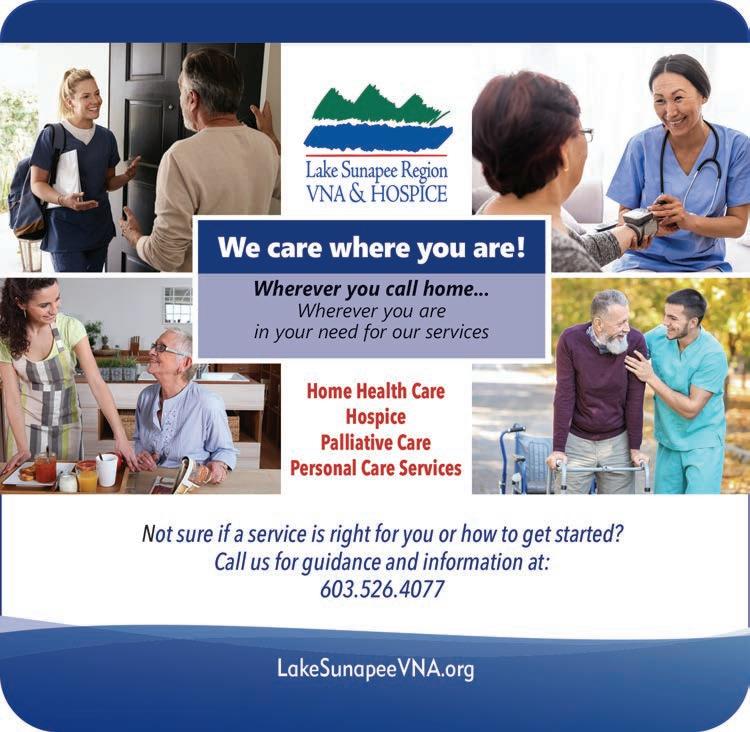
58 image health watch • 2022
Hitchmoth, PLLC 255 Newport Road New London, NH (603) 583-4211 www.drdorothy.org

2 Maple Street Hanover, NH (603) 643-0044 www.ledyardbank.com
Other locations in Concord Lebanon Lyme New London Norwich, VT West Lebanon
Ledyard Financial Advisors is the wealth management division of Ledyard Bank. We manage over $1.9 billion of client assets. We help individuals, businesses, and institutions make effective decisions about how to save, borrow, and manage their finances. Our unique combination of expert advice, leading-edge financial solutions, and personal attention represent the highest standard of client advocacy and responsiveness.
Do You Have Financial Peace of Mind?
LEDYARD FINANCIAL ADVISORS CAN HELP

At one point or another, many of us have asked ourselves questions ranging from Have we saved enough to purchase our first house? and Can we afford college tuition? to Have we saved enough to retire? In essence, Am I going to be ok?
The first step to achieving any of these milestones is to develop a financial plan, which doesn’t necessarily need to be overly complex and time consuming. Financial planning entails looking at your big picture. This includes your cash flow, savings and investment assets, retirement assets, real estate, insurance, and how taxes might impact you.
Pulling together these financial pieces of the puzzle offers a clearer understanding of how you spend your income and if you’re saving enough to meet your short-term and long-term goals. The planning process will either give you the peace of mind or make you aware that adjustments need to occur. Here are some key areas of focus.
Budget and Cash Flow Planning Now and for Retirement
Your budget is essential to planning wisely for current and future goals, as it will help determine where your money goes. If you itemize where your dollars are spent, you’ll see where you need to cut back if necessary. Your goals may include paying off debt, saving for a down payment toward a new home, buying a new car, paying for your children’s education, and, of course, your retirement. Setting a goal that is achievable is important. If you intend to maintain your preretirement
lifestyle, you’ll need to start saving early so you’ll have a reliable future income stream. Social Security is a steady source of income; however Social Security may not be enough to carry you through those retirement years.
Investment Planning
Start early and pay yourself first by tak ing advantage of what is available to you, such as contributing the maximum to your employer’s 401(k) plan. Create an investment account that is structured to your risk tolerance and create a ROTH IRA. As you approach retirement, your appetite for risk may change. But it doesn’t mean that you should stop investing, since investments provide an income stream in conjunction with social security.
Tax Planning
Proper tax planning takes a long-term approach. It’s key to assess current holdings in your investment account to determine which assets to draw from in order to get the greatest tax advantage. If proper planning is done, you can reduce exposure to income, capital gains, and estate taxes.
Insurance Planning
Always have health insurance! Simple routine doctor visits can turn into costly events. As you get older, you may consider long-term care insurance. Disability insurance can provide a percentage of your salary if you’re unable to work. Life insurance can provide for dependents. And without auto and homeowners/renters insurance
John O’Dowd, CTFA, is Senior Vice President, Director of Client Relations. His responsibilities include resolution of client service issues, focusing on client satisfaction. Additional responsibilities include management of the Financial Advisor team with overall responsibility for business development for Ledyard Financial Advisors.

financial wellness 60 image health watch • 2022

coverage, you may not be able to afford replacing the items lost if an event occurs.

Legacy/Estate Planning


Work with a financial advisor, an estate-planning attorney, and a certified public accountant (CPA) to pass your wealth on to your beneficiaries in a tax-efficient manner. Plan for your legacy during the healthier years of your life.
Plan Well, Live Well
There are many financial planning tools available and finding the right one is important to help you achieve what matters most in your life. Ledyard’s Live Well Planning approach utilizes technology and, in conjunction with our team’s expertise, helps clients have more peace of mind with accomplishing their financial goals. We can strategize and visualize a plan to help you achieve your dreams. This scenario-planning technology helps you see the impact of the “what-ifs” in decision making. Our approach stress-tests vari ous scenarios with visualization technology, providing confidence with the potential outcome of success. Having access to your plan anytime to monitor your progress is important to keep you on track. We help clients plan well so they can live well!
financial wellness 62 image health watch • 2022
Ledyard’s Live Well Planning approach utilizes technology and, in conjunction with our team’s expertise, helps clients have more peace of mind with accomplishing their financial goals.
 BY LISA BALLARD PHOTOS COURTESY OF UNTAPPED EXCEPT AS NOTED
BY LISA BALLARD PHOTOS COURTESY OF UNTAPPED EXCEPT AS NOTED







ATHLETES


64 image health watch • 2022
MAPLESYRUPFOR PEAKPERFORMANCE FUELING
FROM THE FOREST MAPLE PEAK Photo courtesy of Pro777 |Dreamstime
Living in the Upper Valley, you probably know at least two things about maple syrup: it’s made from maple sap that’s tapped from maple trees in the spring, and it’s sweet and oh so tasty on pancakes and waffles.
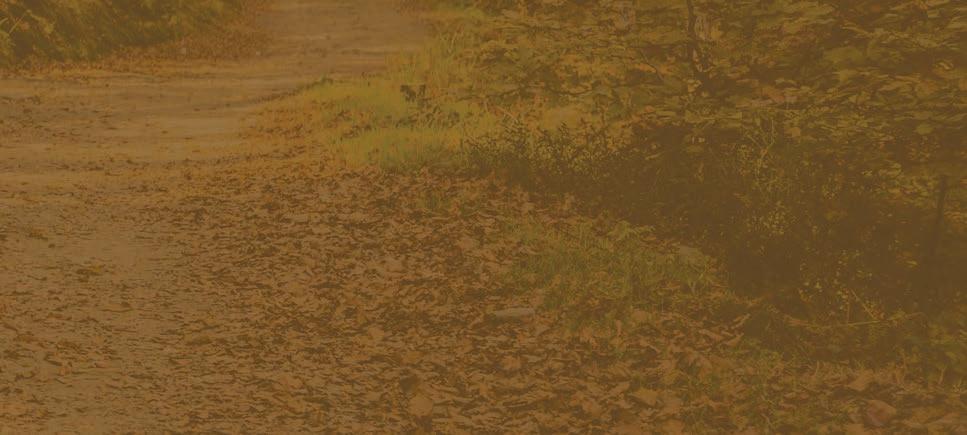
However, maple sugar is more than just magical to your taste buds. This delicious, natural breakfast condiment contains antioxidants and scores lower on the glycemic index compared to refined sugar, corn syrup, and brown rice syrup, meaning it doesn’t cause energy spikes and crashes like those other sweeteners. It contains vitamins and minerals including B2, B5, B6, niacin, biotin, folic acid, zinc, and manganese and trace amounts of amino acids.
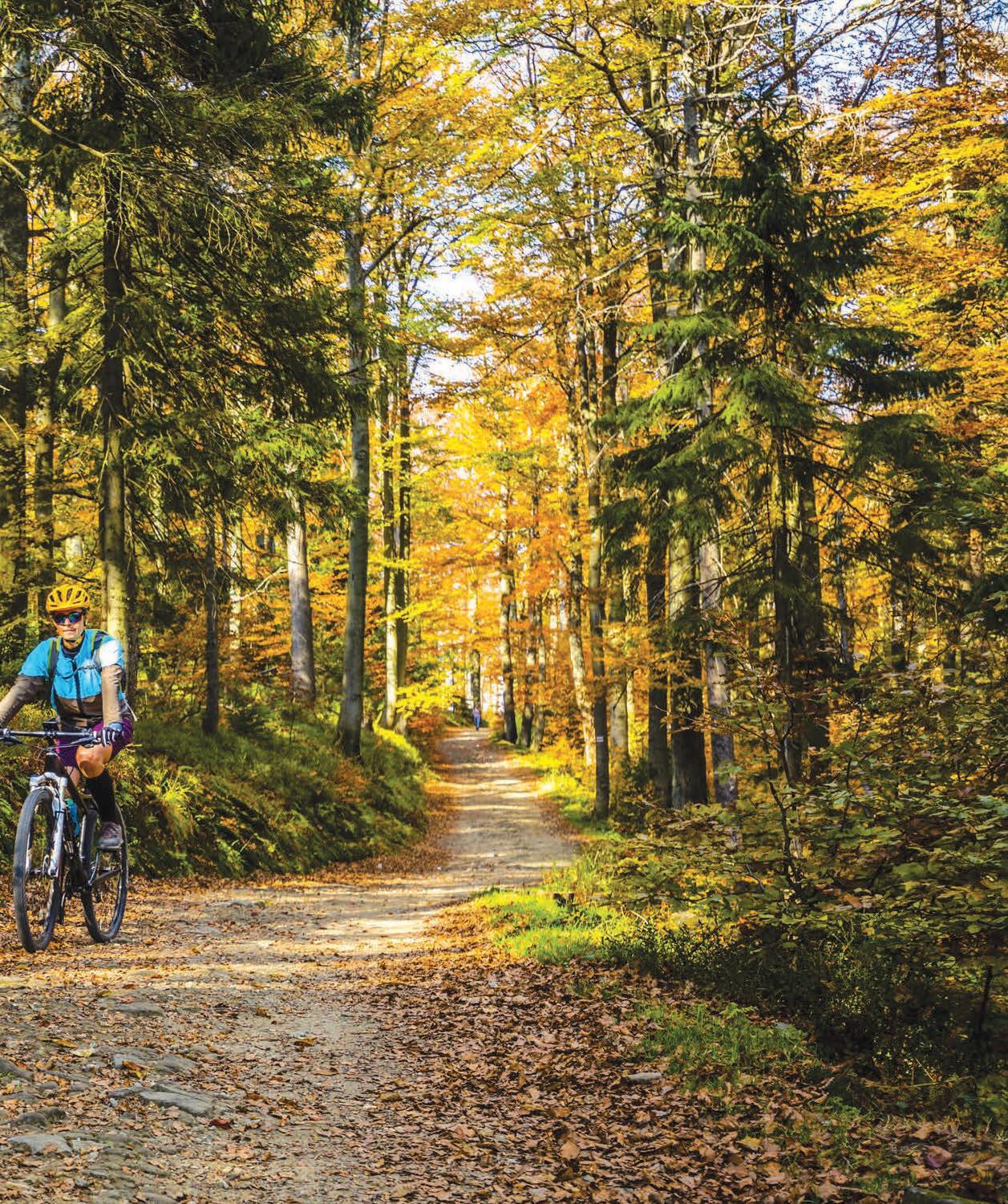
WWW.GREATERUPPERVALLEY.COM • 65
Current research also hints at maple syrup’s ability to reduce inflammation and enhance the efficacy of antibiotics. Maple syrup has long been a superior sweetener for all of these reasons, and now it’s energizing superstar athletes.

World-class competitors and weekend war riors alike, especially endurance athletes, have long turned to countless food and drink aids while training and racing to sustain performance. If you’re a cyclist, Nordic skier, or runner, you’ve probably ingested a fair amount of GU energy products, Gatorade, gummies, and similar sport fuels for their quick-burning carbs and to replace electrolytes during exercise. They don’t taste particularly good, but the needs of your body outweigh the marginal flavor.
What if maple syrup could be used for sports nutrition like these other products? It certainly tastes better than GU, and it’s a natural, sustain able forest food rather than a complex processed product with a back panel of ingredients that you don’t recognize. Two elite athletes—an alpine ski racer named Roger Brown from Vermont, and a professional cyclist named Ted King from New Hampshire—wondered the same thing and began experimenting with the idea, independently from each other at first.
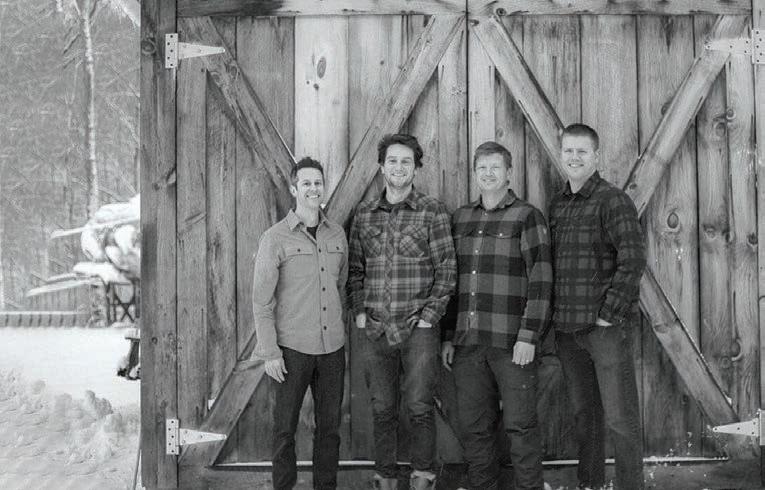
The Birth of UnTapped Roger Brown was an All-American alpine skier at Dartmouth College who then raced on the US Ski Team. He is also a member of the legendary Cochran family—the son of Marilyn Cochran, a former Olympian and World Cup standout in the late 1960s and early 1970s. In 2010, Roger moved back to Vermont and started maple sug aring with his brother, Doug, and two cousins, Jim Cochran and Tim Kelly, around Cochran’s ski area. They quickly built a sizeable operation, with 22,000 taps that earned about $250,000 per year under the brand Slopeside Syrup. It was a good business that fit well timing-wise with running a ski area, which wound down in early spring just as the sap started flowing. Yet the four cousins wondered how to grow from there as a company.
“I liked to do energy gels and thought maple syrup would work as fuel,” recalls Roger. “I started giving small gel-size flasks of maple
66 image health watch • 2022
Below: UnTapped founders, from left: Andrew Gardner, Ted King, Roger Brown, and Doug Brown.
Bottom: Doug and Roger Brown with John Nichols boiling into the night. Opposite, from left: A selection of the maple-fueled product line. Photo by Connor Burkesmith. The sugarhouse is located at the base of the Cochran Ski Area in Richmond.
“Maple syrup gives you all you need for energy as an athlete, and it digests more easily than other fuels,” says Roger. “There’s nothing synthetic about it, and it tastes really good, which makes you want to eat more of it, but you won’t get sick. And it’s right out of the hills of Vermont. It’s local. It’s wild harvest.”

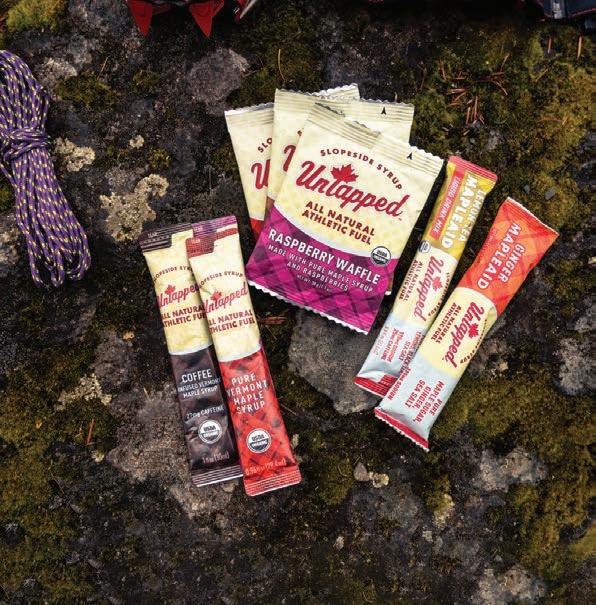

WWW.GREATERUPPERVALLEY.COM • 67
syrup to friends, but no one tried it. It was a corked bottle, so not something they wanted to carry while running. It didn’t look like a sports nutrition product.”
At the same time, Ted King, a Middlebury College gradu ate, lived in Spain and competed in the Tour de France and similar elite cycling events. He was the only New Englander on the professional cycling tour and an early adopter of social media, on which he often posted about maple syrup.
“Fans from the United States would give me maple syrup as a gift,” he says. “I would take nips of it before and after rides, then I started putting it in my water bottle, diluting it with water, so it wasn’t a big leap to use maple syrup for my sports nutrition. It digests fast, has amino acids and antioxidants, and it tastes good. Why would I take anything else?”

In the off-season, back in New England, Ted pitched the idea of putting maple syrup in gel packets to farmers at farmers’ markets, but there were no takers in what he described as “an old-school trade that only thought about glass or plastic bottles for pancakes.”
At the suggestion of his friend, Andrew Gardner, the Nordic ski coach at Middlebury College at the time, he contacted the Cochrans. “It was me, an athlete, pitching an idea to another set of athletes,” says Ted.


68 image health watch • 2022
Cofounder Ted King is all in on maple. Photo by Cody Mann.
Roger was of a like mind, but he had one caveat. The packaging had to look like other sports nutrition packets, and that would take money, about $50,000 that neither of them had to invest. But thanks to Ted’s widespread fame among cyclists and large social media following, they successfully crowd-funded their startup, UnTapped, with Roger and Doug Brown, Ted King, and Andrew Gardner as the founding partners.


At first, Roger’s garage served as the warehouse, and Ted used his cycling network to sell UnTapped online and through bike shops. “In bike shops, sports nutrition is stagnant,” says Ted. “That’s why GU has 750 flavors. The shops want new, and we’ve got a good story that resonates with athletes. Plus, you can always pour it over your pancakes.”
Maple syrup has since caught on as a sports fuel. Several other brands have joined the market, but UnTapped remains a leader of the “packet.”
Powering Athletes

In addition to pure maple, UnTapped offers salted cocoa, coffee, and salted raspberry packets. The salted ones replace electrolytes. The coffee and cocoa ones contain caffeine, another ingredient sought by athletes. These sports nutrition packets only contain maple syrup and the other ingredi ents in their name. For example, if it’s coffee-flavored, it contains real coffee and maple syrup. That’s it.
“They are easy to digest,” says Roger. “You can eat them all day long. At mile 17 in a marathon, you don’t get the gut rot that gel gives you. I once ate a halfgallon of maple syrup during a 17-hour bike race. You couldn’t eat a half-gallon of GU!”
UnTapped has recently introduced a waffle cookie similar to Danish stroop wafels. “Cyclists in Northern Europe brought honey-filled cookies to the United States, which gave us the idea for a maple-filled cookie,” says Roger.
WWW.GREATERUPPERVALLEY.COM • 69
“They’re more of a snack for a long hike, but they’re nutritious fuel, too.” The company also has two drink mixes—ginger and lemon tea—called Mapleaid, which mix easily into cold water.

“Maple syrup gives you all you need for energy as an athlete, and it digests more easily than other fuels,” says Roger. “There’s nothing synthetic about it, and it tastes really good, which makes you want to eat more of it, but you won’t get sick. And it’s right out of the hills of Vermont. It’s local. It’s wild harvest. If you look at the ingredients of Honey Stinger, there’s really very little honey in it. With UnTapped, there’s lots of maple in there!”
“It’s helpful that we live in a whole-foods era where people pay attention to what they put in their bodies,” adds Ted. “In cutting-edge athletics, you want top-notch fuel. Maple is a better carb than any other packet of sports nutrition out there. It’s bet ter tasting and better digesting. You don’t look forward to GU, but you’ll be happy eating maple syrup. If we could give it to every athlete out there, we would have a 100 percent conversion rate.”
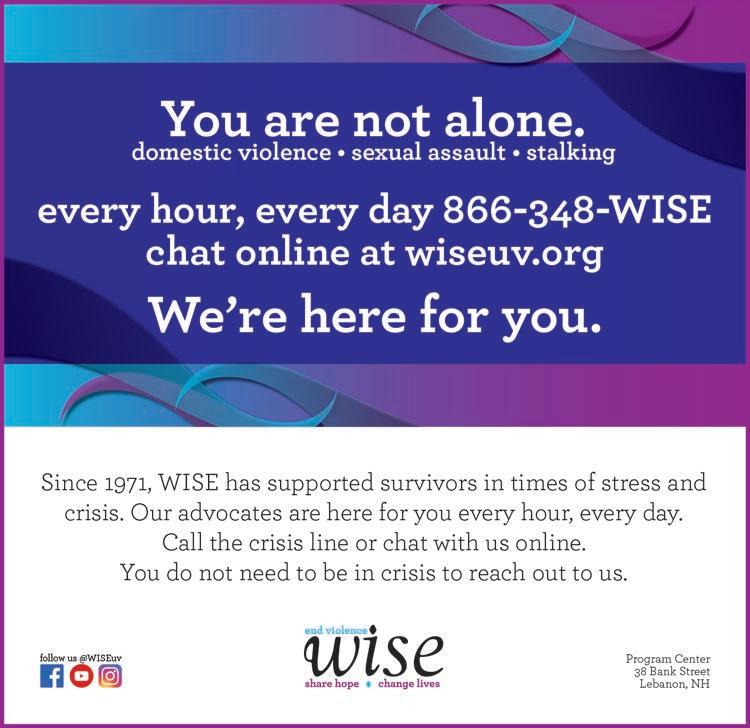
In addition to Ted and the Cochran family, which Roger calls the company’s numberone consumers, athletes such as Olympic gold medalist Kikkan Randall (Nordic skiing) use UnTapped for their sports nutrition needs. So say goodbye to GU and hello to maple syrup next time you need to refuel, and you’ll have sweet success in your favorite sport.

UnTapped - All Natural Athletic Fuel untapped.cc

70 image health watch • 2022


WWW.GREATERUPPERVALLEY.COM • 71
APD Lifecare 56
Align Body & Mind 45
Allen Pools & Spas 45
Anichini 802 45


Annemarie Schmidt European Face and Body Studio Back cover
Baker Orthodontics 11
Brown Furniture 59
Colonial Pharmacy 44
Co-op Food Stores 19

Dartmouth Health 7

Dr. Donna Reed, Optometrist 69
Dr. Dorothy L. Hitchmoth 2
Dr. Neely–Hanover Orthodontics 8



Dr. Randy Schaetzke 49
Dr. Roger Phillips 4
Dr. Sam’s Eyecare 1
Elevation Clothing 35
Eyeglass Outlet 44
Hanover Eyecare 63
Hanover Road Dental Health 57
Hanover Terrace Health & Rehabilitation Center 62
Hill Opticians & Gallagher Eyecare 45
ADVERTISERS INDEX


Hubert’s Family Outfitters 45
Johnson Audiology 44
Junction Frame Shop 28

King Arthur Baking Company 18
Lake Sunapee Region VNA & Hospice 58
Lebanon Paint & Decorating 69
Ledyard Financial Advisors 61
Little Istanbul 43
Loewen Window Center 71
Love’s Bedding & Furniture 67
Mascoma Dental Associates 12
Mertens House 22
Mt. Ascutney Hospital and Health Center Inside back cover
NT Ferro Estate & Custom Jewelers 28



New England Beauty & Wellness 45

New London Hospital 13
Northeast Delta Dental 3
Peraza Dermatology 9


Quail Hollow 53
Quechee Cuts 45 Richard Electric 58 River Road Veterinary Clinic 45 River Valley Club 44
Schell Family Dental Care 23
Shaker Hill Granite 68
Springfield Hospital Inside front cover


Stateline Sports 44
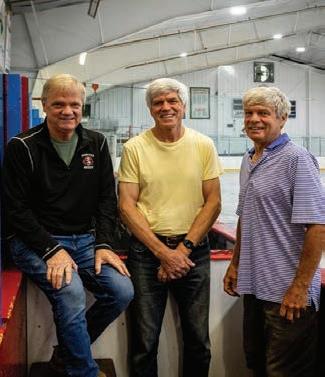
Strong House Spa 44
Sugar River Bank 17
Sugar River Kitchens Bath & Flooring 57
Summer Court Dental 53
Sunapee Cove 6

Synergetic Fitness 12
Tanner Wallace Dental 70
Terrace Communities 34
The Cabinet en-Counter 44
The Gilded Edge Frame Shop & Gallery 45
Upper Valley Business Alliance 44
Upper Valley Pediatric Dentistry 62
VNA of VT/NH 71
Valley Regional Hospital 5
Valley Vision Family Eyecare 44
WISE 70
White River Family Eyecare 63
Windows & Doors by Brownell 29
Woodcrest Village 32
For more information about print and online advertising opportunities, contact Bob Frisch at (603) 867-9339 or email rcfrisch1@comcast.net.
Don’t Miss Out!
Keep up with local people, places, and events with our outstanding editorial content by sub scribingto Here in Hanover and image. Every issue includes special features, interviews and profiles, and news on local businesses, all high lighted by beautiful imagery from the area’s top photographers.
A Perfect Gift
Share the wonder of our beautiful area and the latest news all year long with a Here in Hanover and image gift subscription. Friends and family who have moved away from the area will be especially appreciative. Be sure to order a subscription for yourself too!


Send a check for $19.95 for each publication for one year (4 issues) to Here In Hanover or image, 135 Lyme Road, Hanover, NH, 03755. Or click on More at the top of the home page to subscribe online at www.greateruppervalley.com. Conveniently pay online using PayPal.

72 image health watch • 2022
andneighboringcommunities FALL2022 VOLUME27,NO.3 $4.95 HANOVER here in HERE IN HANOVER FALL 2022 DARTMOUTH OUTING CLUB GetOutandExplore HANOVER HISTORICAL SOCIETY ATourof WebsterCottage A TALE OF Three Coaches THE WINNING DODDS BROTHERS image Fall 2022vol.17 no.3 $4.95 FALL 2022 image ENFIELD SHAKER MUSEUM PRESERVING THE PAST WINDSOR STATION RESTAURANT HISTORY, FOOD& SPIRITS culture • community • lifestyle FALL FOLIAGE PHOTOGRAPHY Tips from a Pro
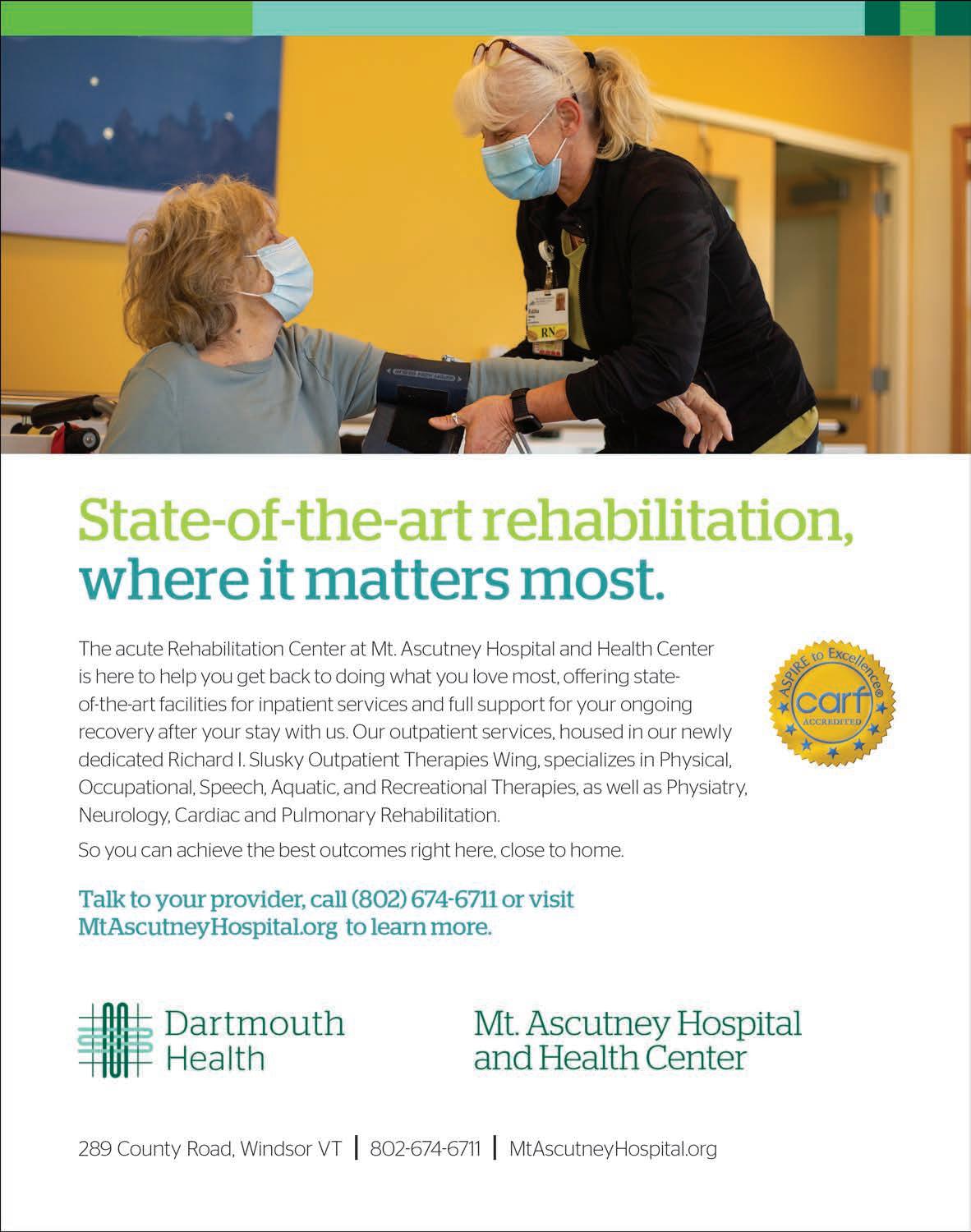
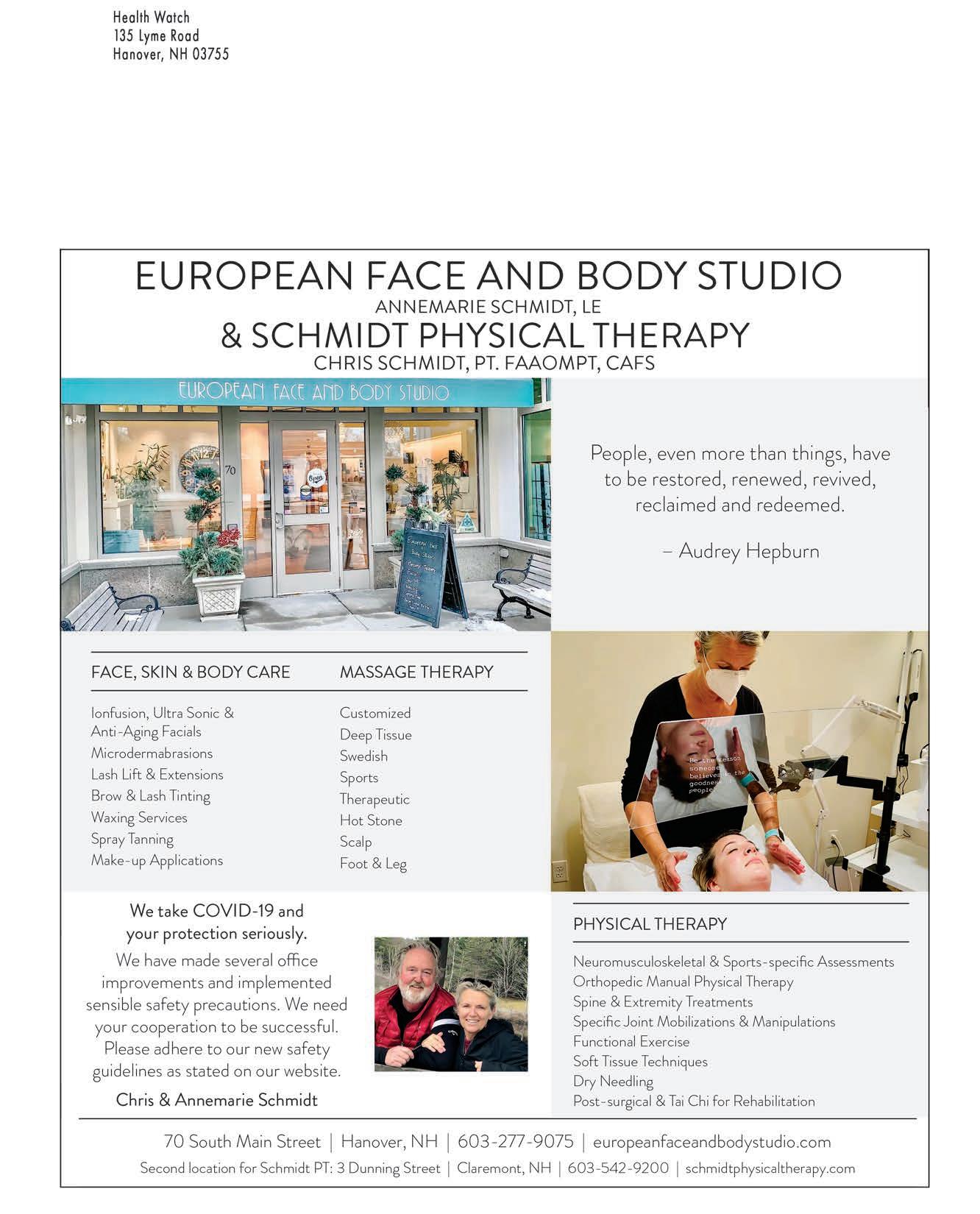




























































 well | BY E. SENTEIO
well | BY E. SENTEIO










































































































 BY LISA BALLARD PHOTOS COURTESY OF UNTAPPED EXCEPT AS NOTED
BY LISA BALLARD PHOTOS COURTESY OF UNTAPPED EXCEPT AS NOTED









































